We recently got the chance to catch up with Staff Pro and more importantly, a long-term friend of f-stop, Jesper Grønnemark. Jesper trained in photography at the Media College Denmark in Viborg and specializes in shooting sports for advertising. He loves the storytelling aspect of photography, and for more than 10 years he has been traveling the world, shooting exciting events and sports with big brands for advertising and editorial customers. Alongside all this, Jeper somehow finds the time for personal projects. He uses these personal shoots to push the limits of his photographic imagination, and in the last few months, these projects have gone viral.
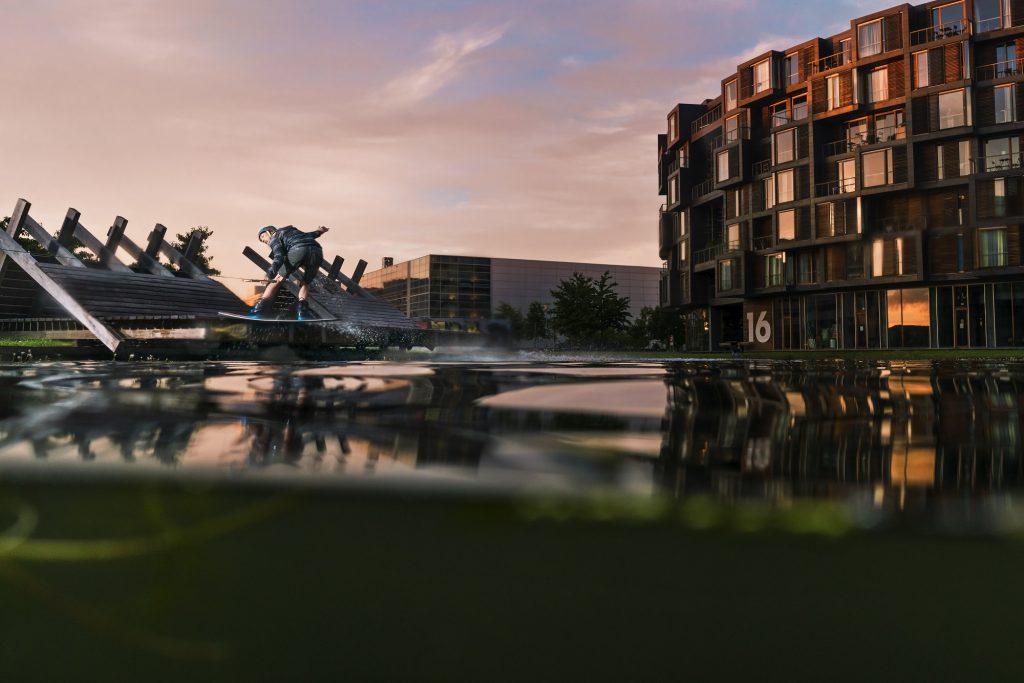
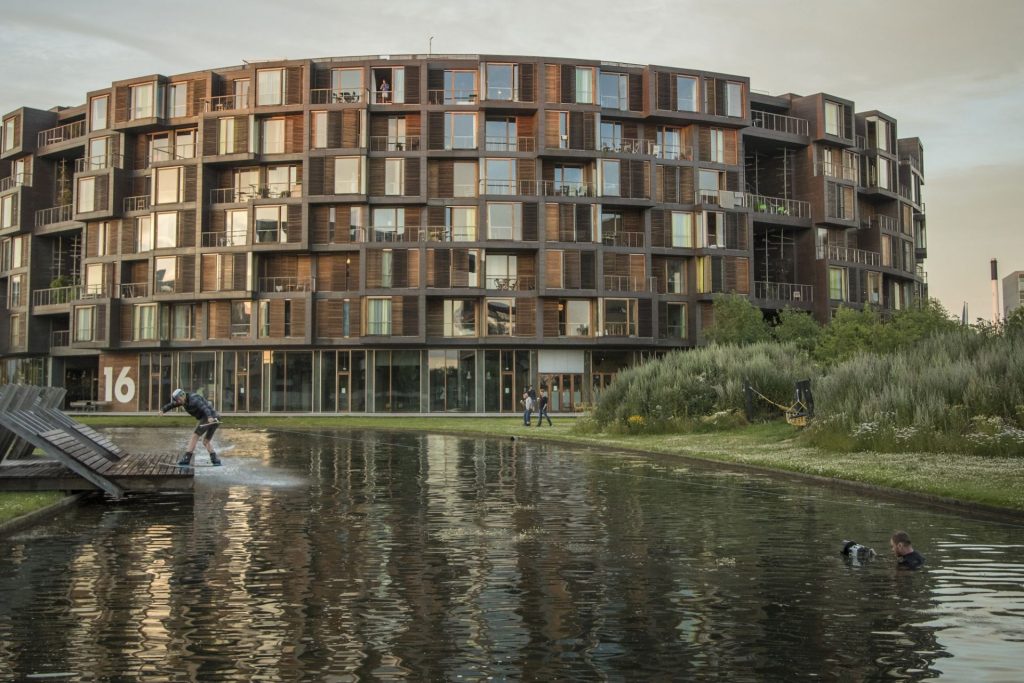
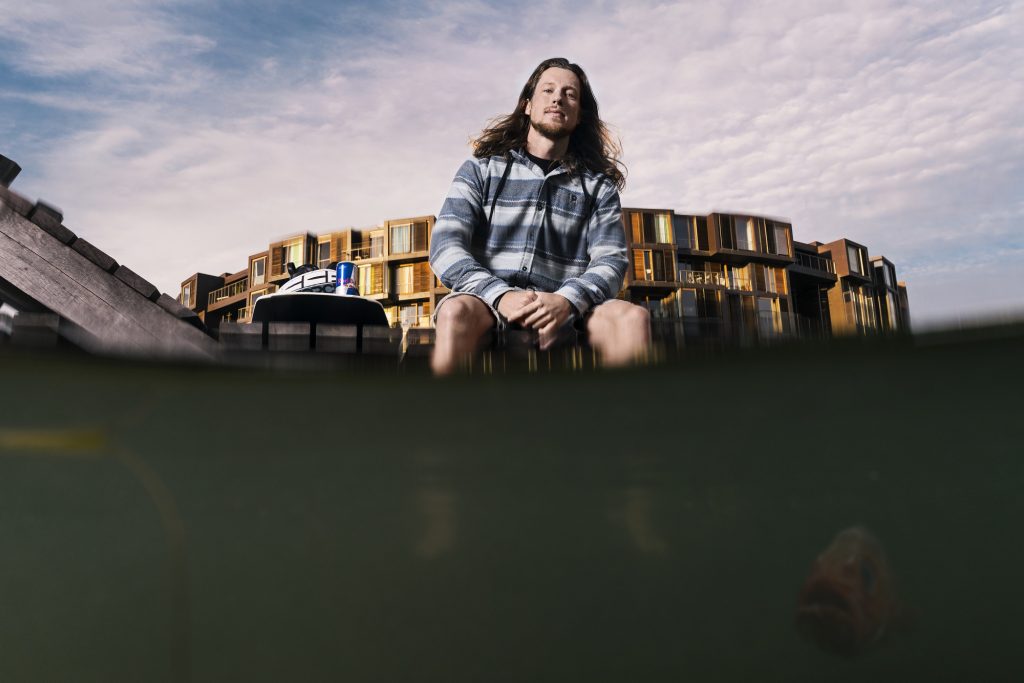
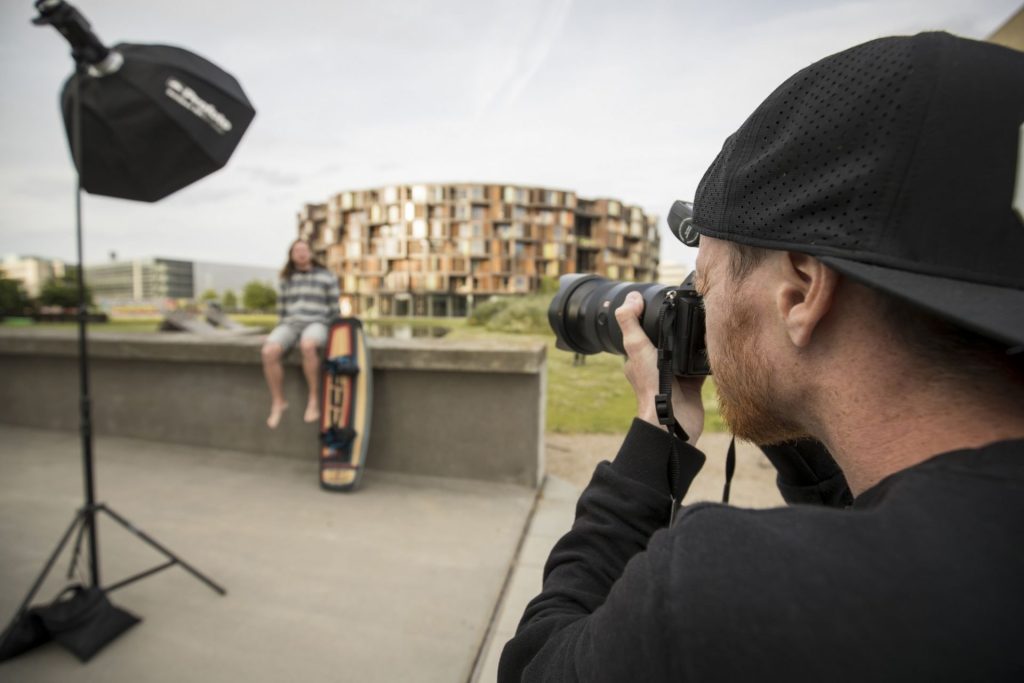
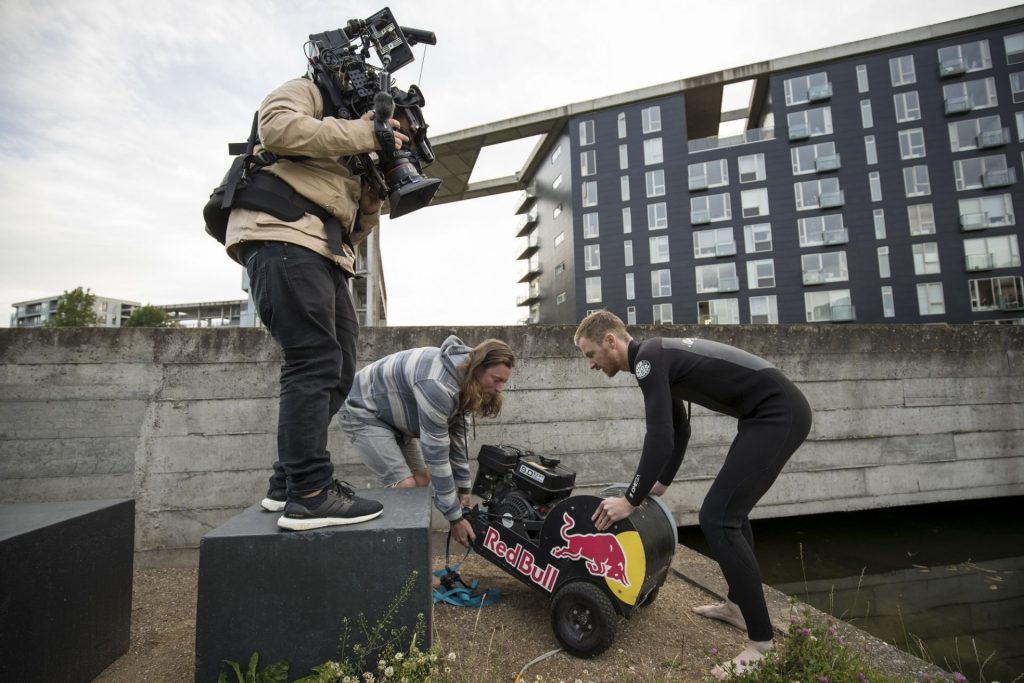
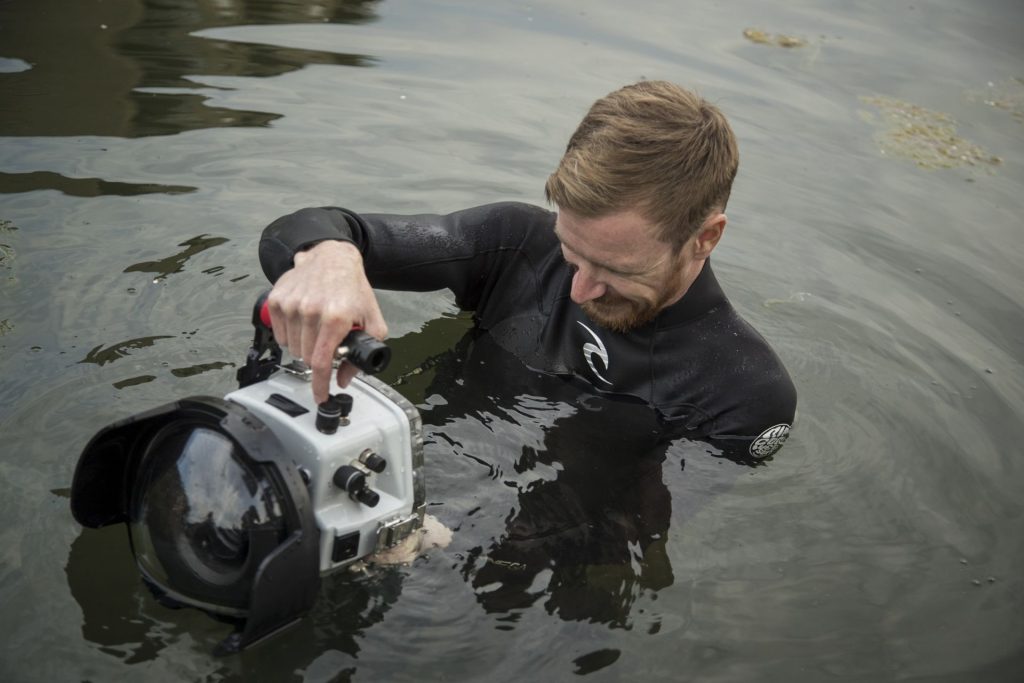
Read on to learn about the reality of making these shooting projects happen, the theme he is following, and his plans for the next one...
Jesper, your main area of work is in the sports industry and we often see your work featured in big events and with great athletes, but today we'd like to talk a bit more about your personal projects. How often do you get to work on these types of projects, and how do you combine this with your regular work?
I put a lot into my personal projects. To me, they are a good way to try new techniques and evolve as a photographer. It doesn’t matter that much if the shoot doesn't go as planned, because there isn't a paying client who needs the images. It’s all for myself. In that way, I feel that I can go right to the edge and sometimes across. That is how I evolve the most in my opinion.
I set a goal for myself at the start of 2017: I wanted to undertake 6 personal projects within that year. To me, a personal project is a shoot where I shoot for myself and not for a paying client. I can do what I want, without being held accountable. It can be a large setup that takes several days to execute or a small shoot that is done in a couple of hours.
Actually, by the end of the year, I reached 19 different personal projects in 2017. I’m pretty impressed by that myself! I think I had the greatest year of my life as a photographer so far. Combining these personal projects with my regular work isn't always easy, but I think it’s a question of prioritizing - I don’t spend much time hours watching TV or doing things like that.
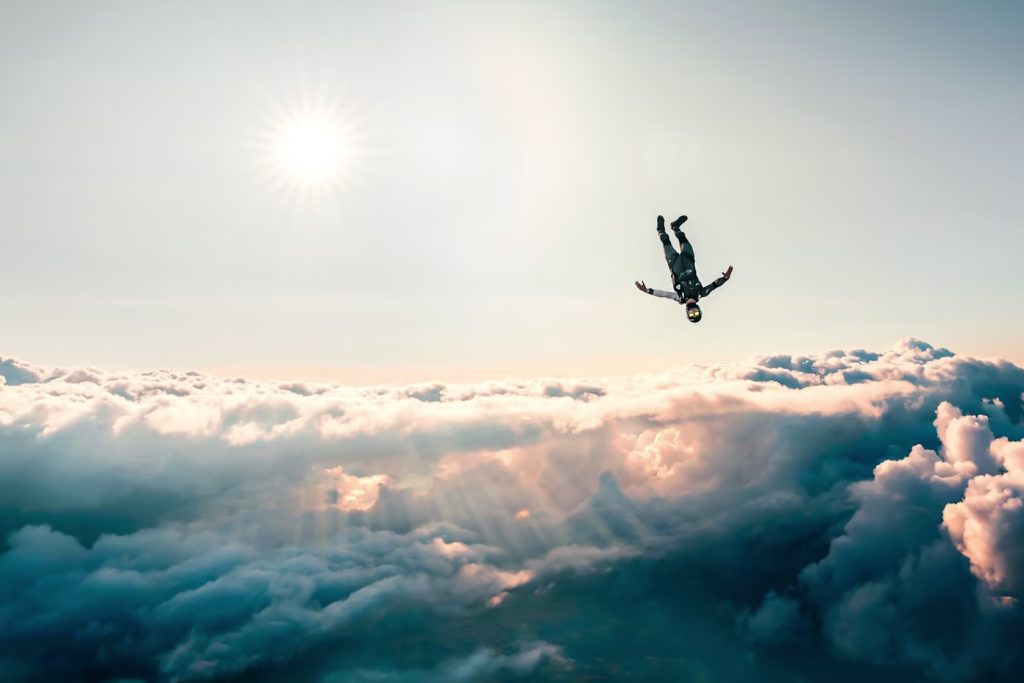

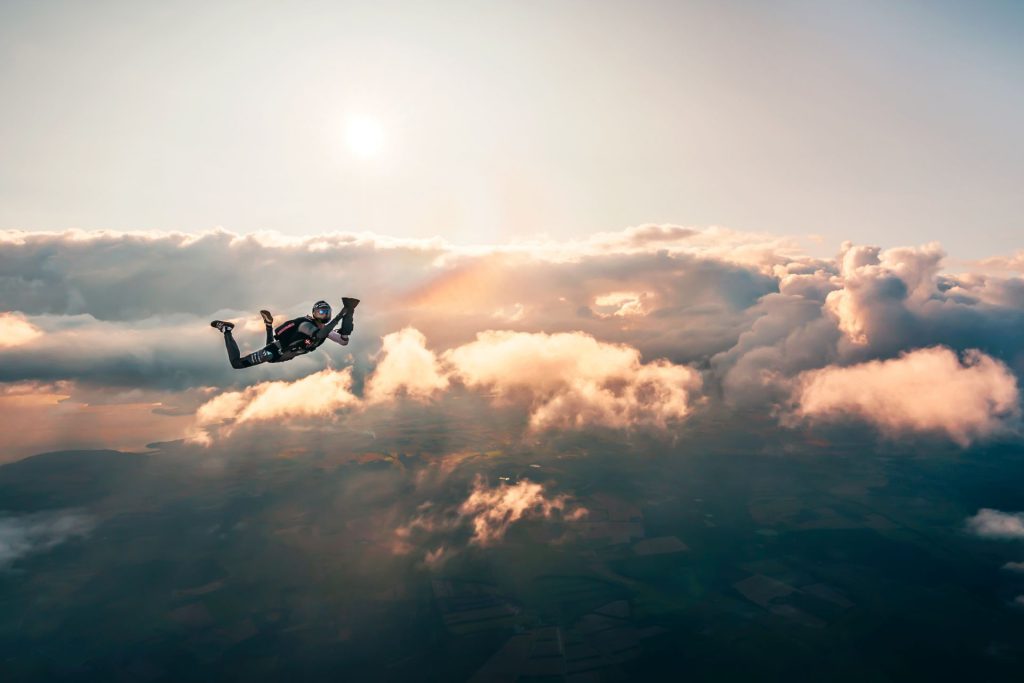
In the last few months, you had two very interesting projects. One was the Wake Boarding in the canals in Copenhagen and the second one was the Sky Diving Shoot which attracted a lot of attention and was shared by Red Bull, Fstoppers, Petapixel, etc. How did those projects get started?
I wanted to shoot skydiving ever since I did my first skydive. To be honest didn't I want to do the jump again, but the idea was stuck in my head. I got the chance to do the shoot with the help of the Danish national skydiving team, Flux Free Fly, Michael Boe Laigaard, and Aarhus Skydive Club.
Actually, when the time came for the shoot, it had to be postponed because of too much wind. I had already gathered together an awesome team to document it all. So instead of disappointing everyone, I went back to my shooting idea list and picked the next idea - the wakeboarding shoot. The wakeboarding shoot went really well and the weather got better, so I was able to do the skydive shoot a few weeks later.
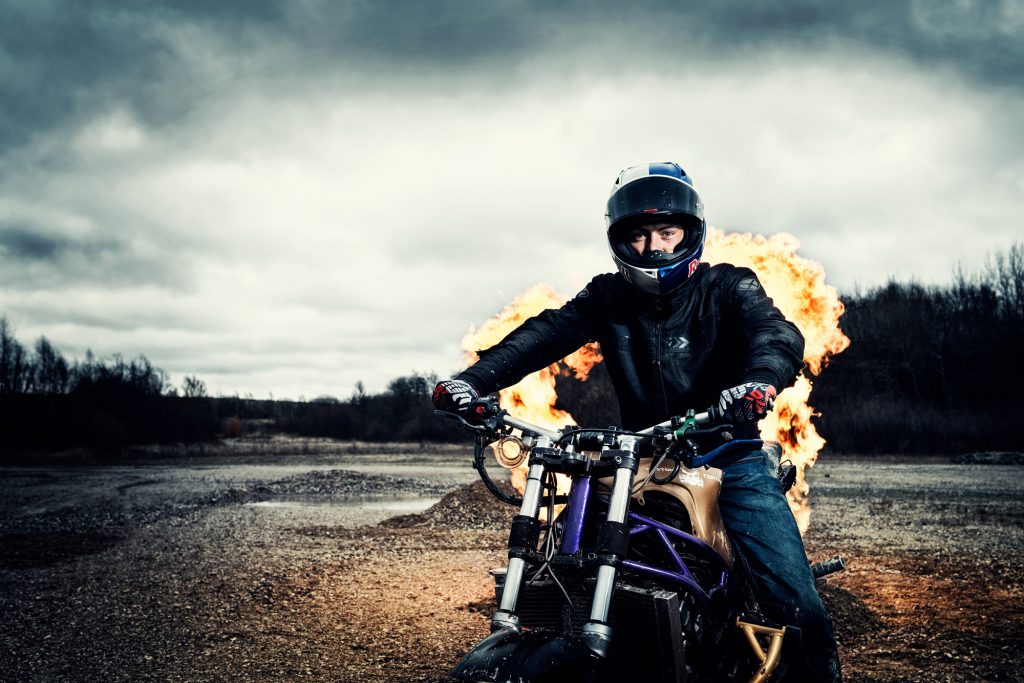
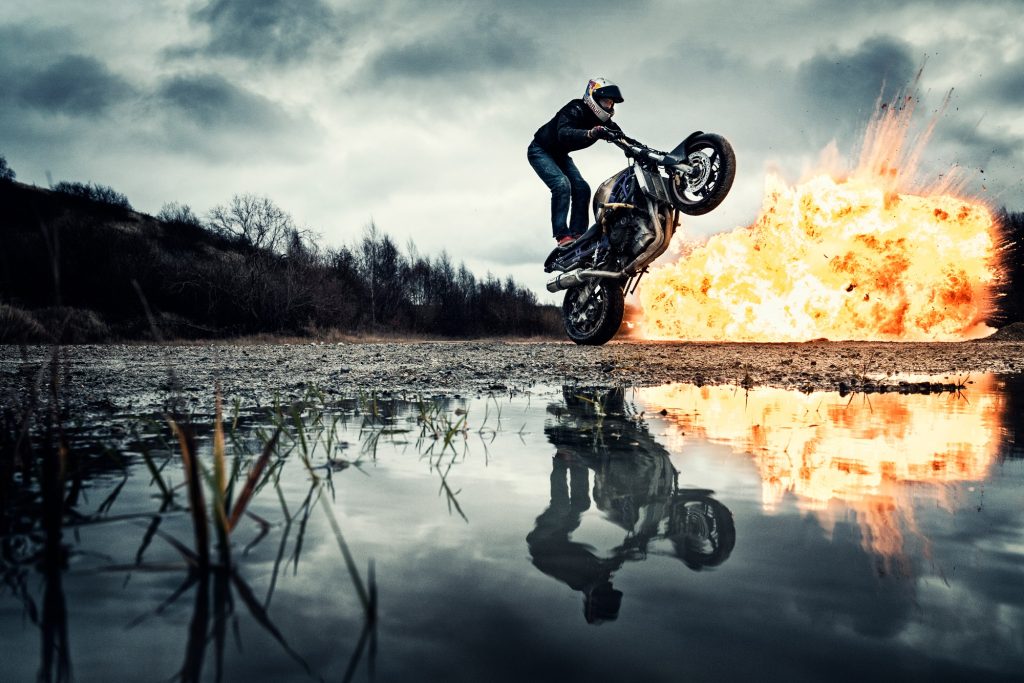
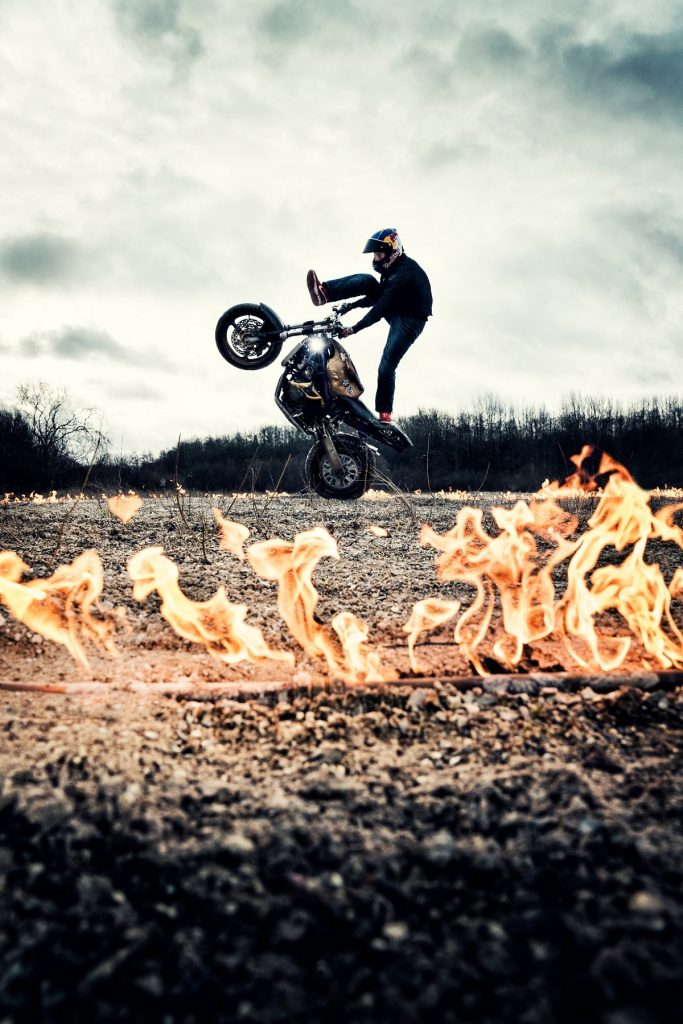
You just released your explosion photoshoot. You seem to be pushing the limits with every new project. Can you give us some behind-the-scenes insight into how you managed to organize this one? I’m sure there must be an interesting story from the logistics of trying to blow things up!
Thank you! At least, pushing the limits is what I’m trying to do. The idea was already there and I had already asked the athlete, Mike Jensen, if he wanted to join the project... so it really came down to finding three more things to pull it together; the right location, special effects guys who wanted to be a part of the project, and a day were the weather was good. It can be quite hard to find a day when it isn't raining in Denmark in the winter time and the special effects guys need to ask for approval from the police 14 days before they can do an explosion. So you are taking quite a chance to pick a shooting day 14 days ahead and collect the entire team together when you can’t predict the weather 2 minutes ahead of time.
There were a lot of people involved in the explosion project, and it took quite a lot of time to organize a shoot that required so many people. First, I needed to get hold of the special effects guys (Nordic Effects), then Mike Jensen. Then Nordic Effects needed to get approval from the police to do the explosions, and I needed approval for the location, videographers needed to book the date, and so on... We were going back and forth, making a lot of phone calls and writing a lot of e-mails. I guess it took up a week of work to make all this happen.
If we take your last few projects, the first one was in the water, the second one was in the air and now you’re playing with fire! Is there a sequence you’re following here?
Do you see a theme here? I noticed that I could take this further by making it into a sequence with the theme of the four elements after I made the wakeboarding- and skydive shoot. Water, wind, fire, and earth. So that is what I plan to do. I “just” need to do the last shot in the sequence which is Earth, now that fire is done too.
What should we expect next from you? There must be a grand finale to this project series... Are you able to reveal some details for us?
I’ve slowly started to work on the next shoot, but it isn't 100% finalized yet. But I think that I might need to travel to another country to get the right location involving Earth - outer space could be cool as well.
Is there anyone who could get me to a space station or the moon?
For this project we teamed up with Dockyard Stores and a badass Hungarian athlete Viktor Zicho. Through this weeklong adventure we hiked up to Patundas Meadows in North Pakistan in order to shoot Viktor riding his mountain bike at 4,500m altitude and hike on the spectacular ridge towards Passu Peak (7,478m) and the mighty Shispare (7,610m).

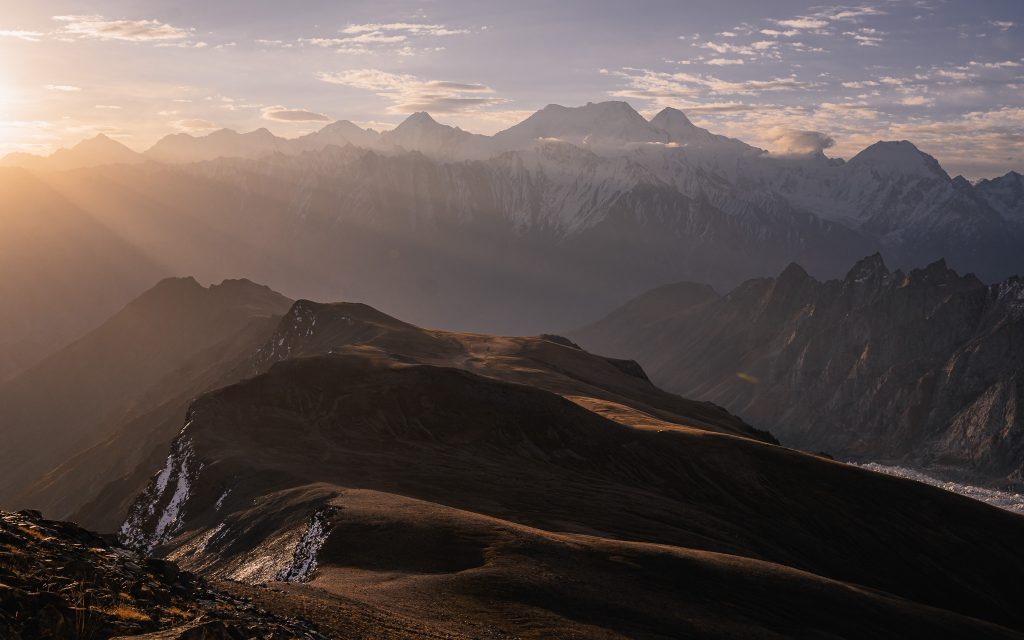
This scenic highland is wedged between two giant glaciers called Batura and Passu. Dockyard provided Viktor with all the required apparels including gears from Mountain Hardware and Scarpa.
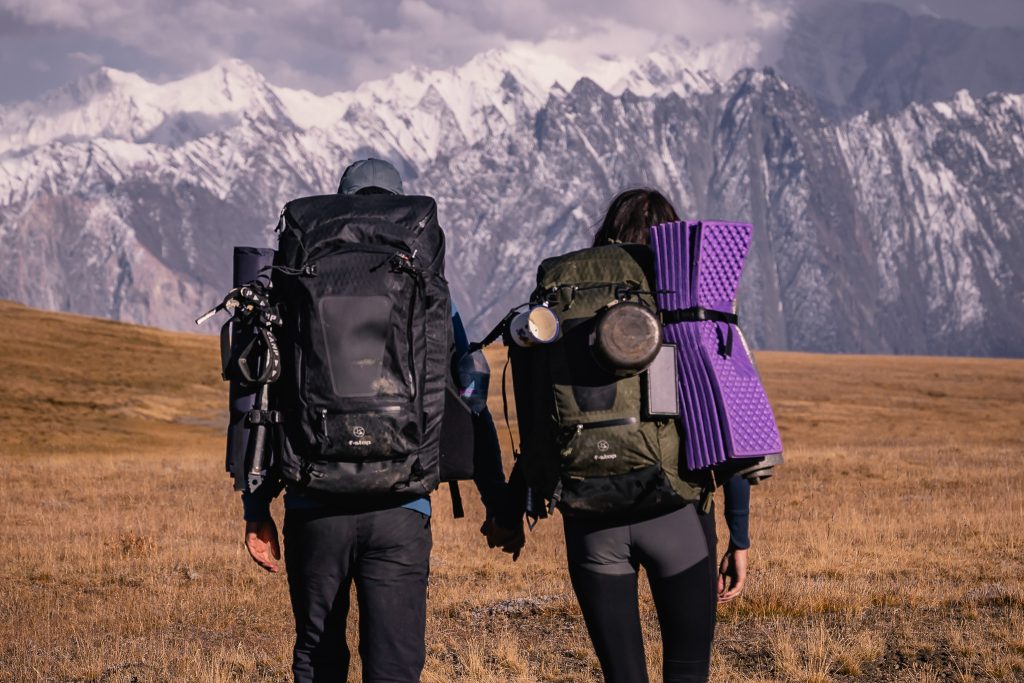
We carried a portable solar system with us in order to shoot the whole weeklong. Weather was sunny therefore we had no problem with charging batteries and backing up data. Getting up to Patundas took us 2 days including a traverse through the Passu glacier and an elevation gain of 2000 meters. We had one local porter helping us to carry up our supplies for one week. Once we arrived, we stayed 2 nights in a shepherd hut then we moved higher up to Passu Peak's base camp and stayed in our tents for the rest of the time.

We carried our gear through the whole trip in ouir f-stop TILOPA 50L backpacks. The packs held camera gear and other essentials we needed for this high elevation hike.


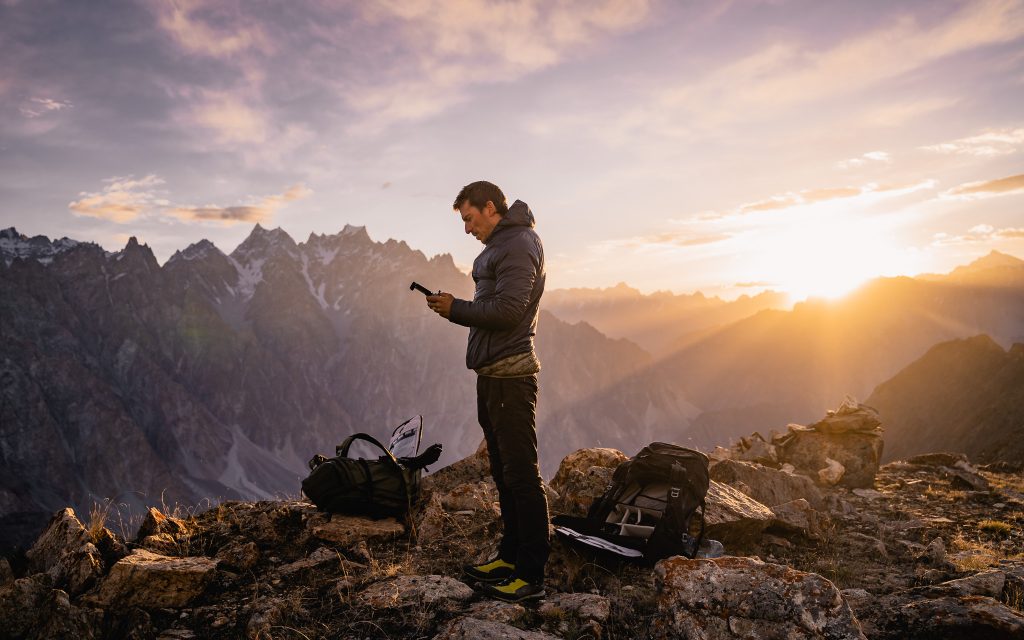


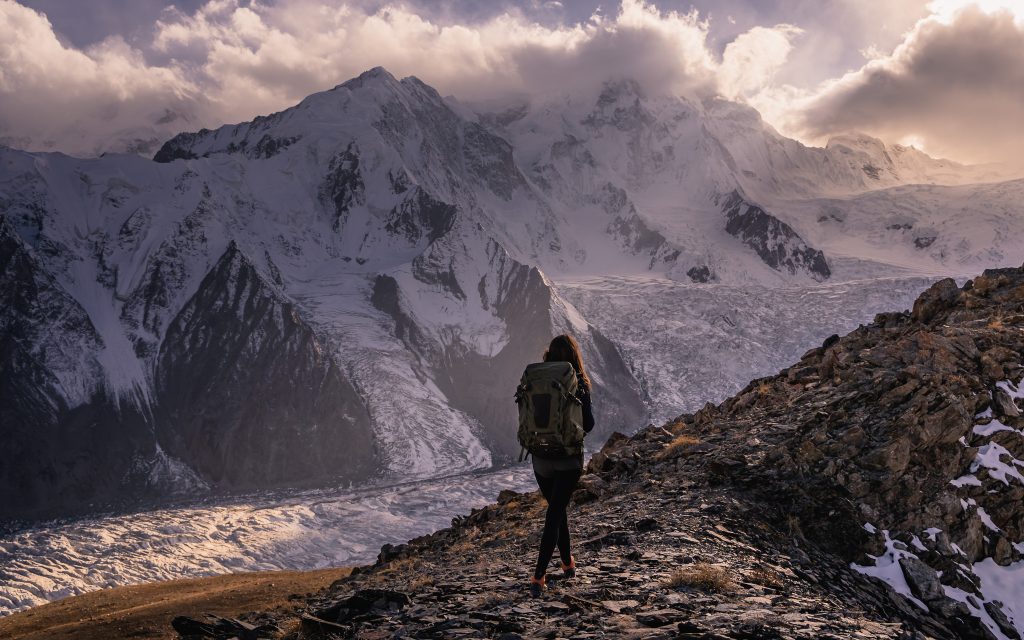
The only available water source was to melt snow during the entire week which worked fine. There was plenty of snow. From Patundas there is one of the most stunning views of entire North Pakistan due to the 360 degree mind blowing panorama of the Karakoram range.
Besides shooting a commercial photo series and video for our client, Viktor had an additional mission to climb a 6000 meters peak in the area which has never climbed before. His mission was not successful. He needed to turn back 500 meters before he could reach the peak due to a dramtic change in the the weather. After one week of constant sunshine, a snow storm arrived. The following day our team decided to leave Patundas and finish this photography and video adventure.

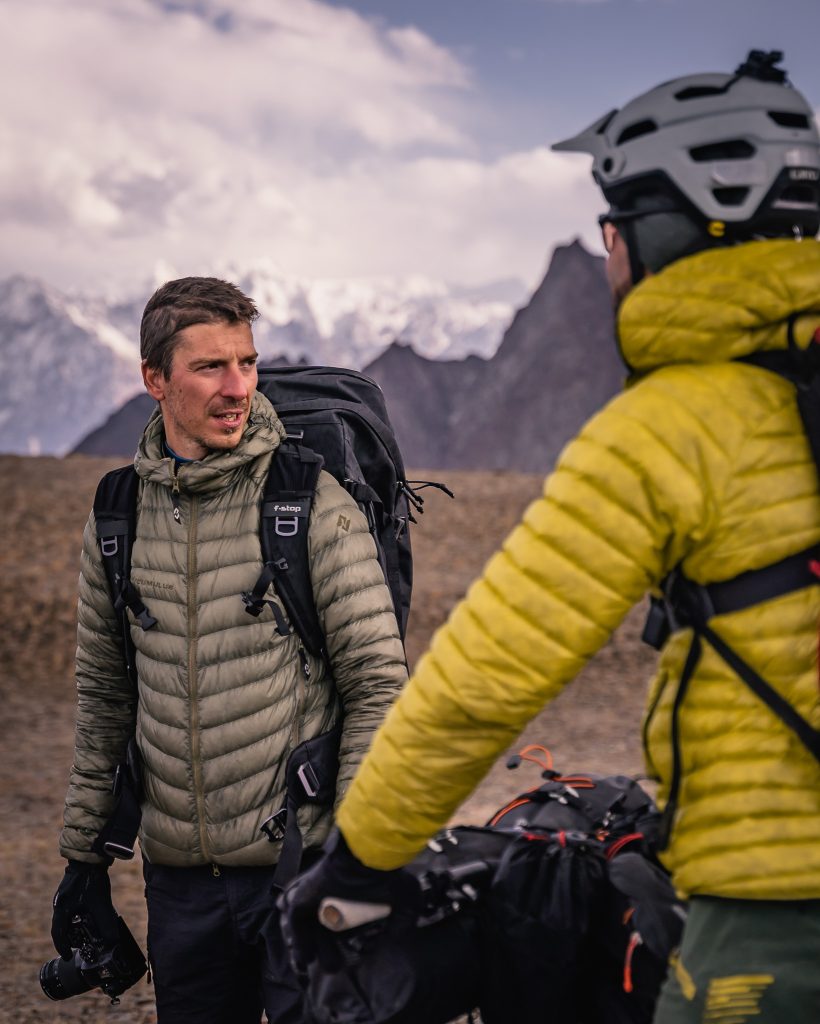

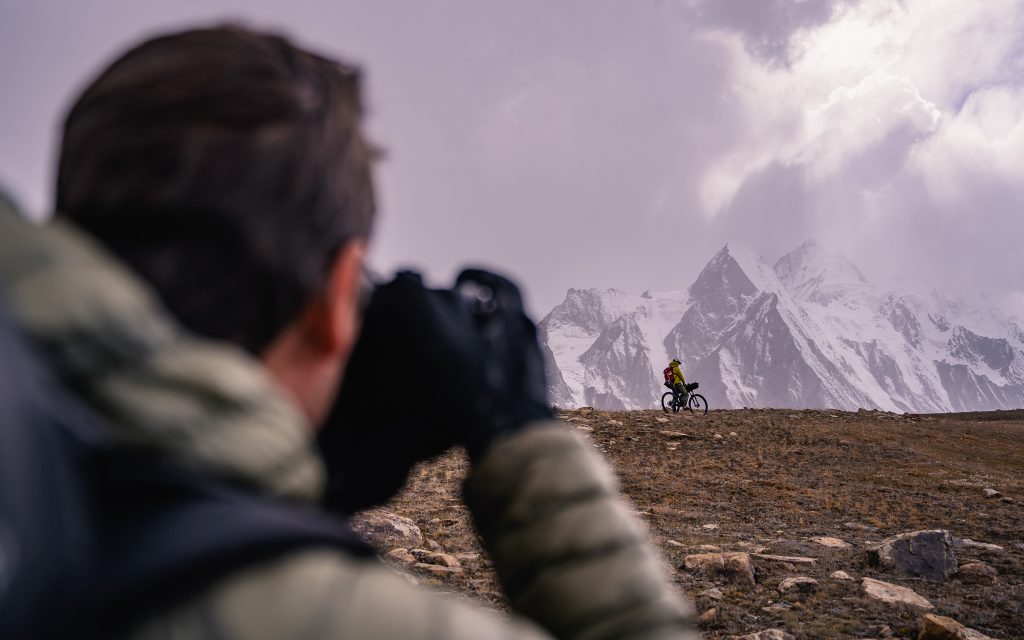

Cecilia Fazekas and Peter Toth are two adventure lovers from Hungary. Peter used to be a sales manager, and during weekends he performed as a DJ in underground house and techno clubs. Cecilia worked as a buyer for a medical equipment company, and she has always had that travel bug inside. Both have been camera geeks from the very beginning of their relationship, and that created a strong bond between them. Their images captured a lot of attention, and it did not take long for them to become professional photographers.
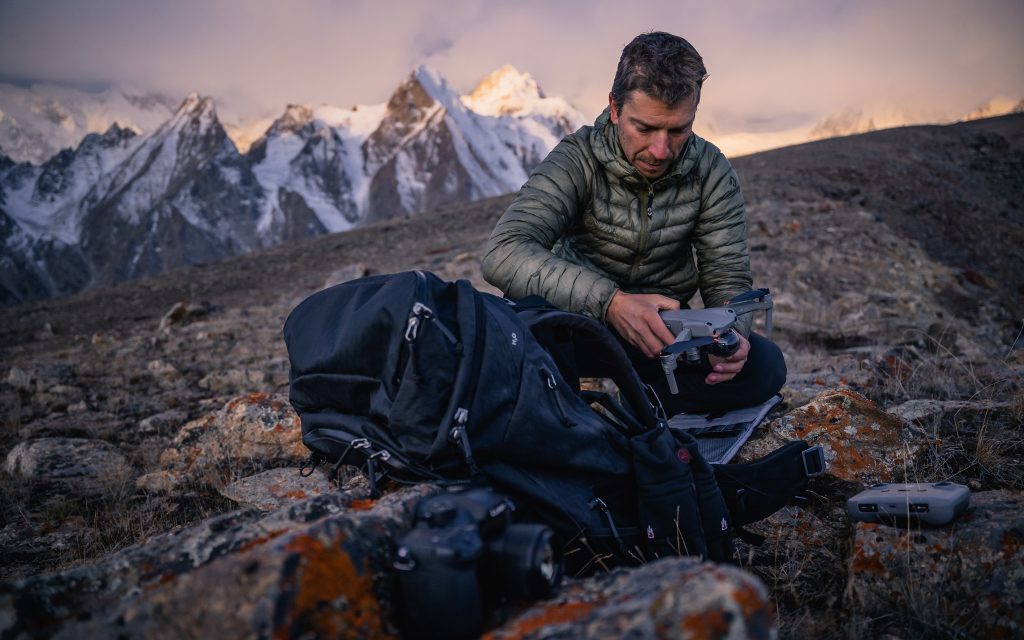
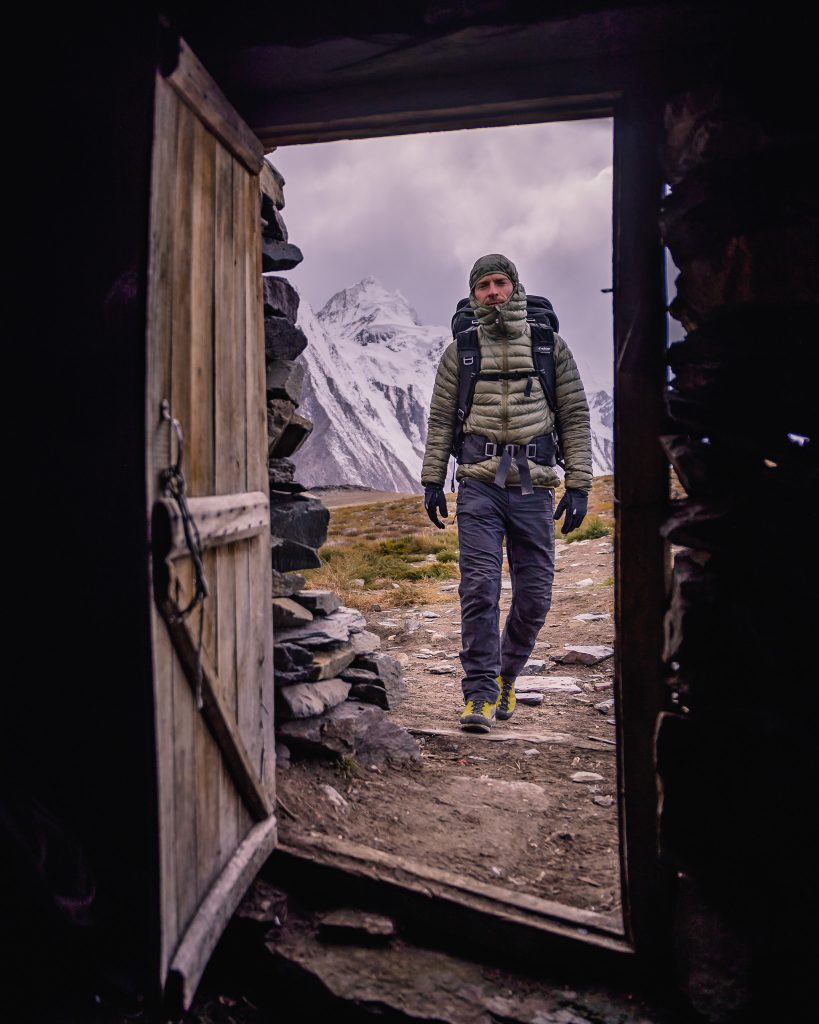
After bidding farewell to their successful careers, they pursued their wildest dream to be full-time travel filmmakers and photographers. In September 2020, they have started their great journey and drove their camper van through 12 countries covering 70,000+ kilometers through the Balkans, Greece, Turkey, Georgia, Armenia, and Iraq. Their next stop was Iran where they travelled more than four months with Peter proposing Cecilia along the way. She said yes. After Iran, the couple went to Pakistan for six months and spent most of their time exploring the incredible mountain ranges of the Karakoram and the Himalaya.
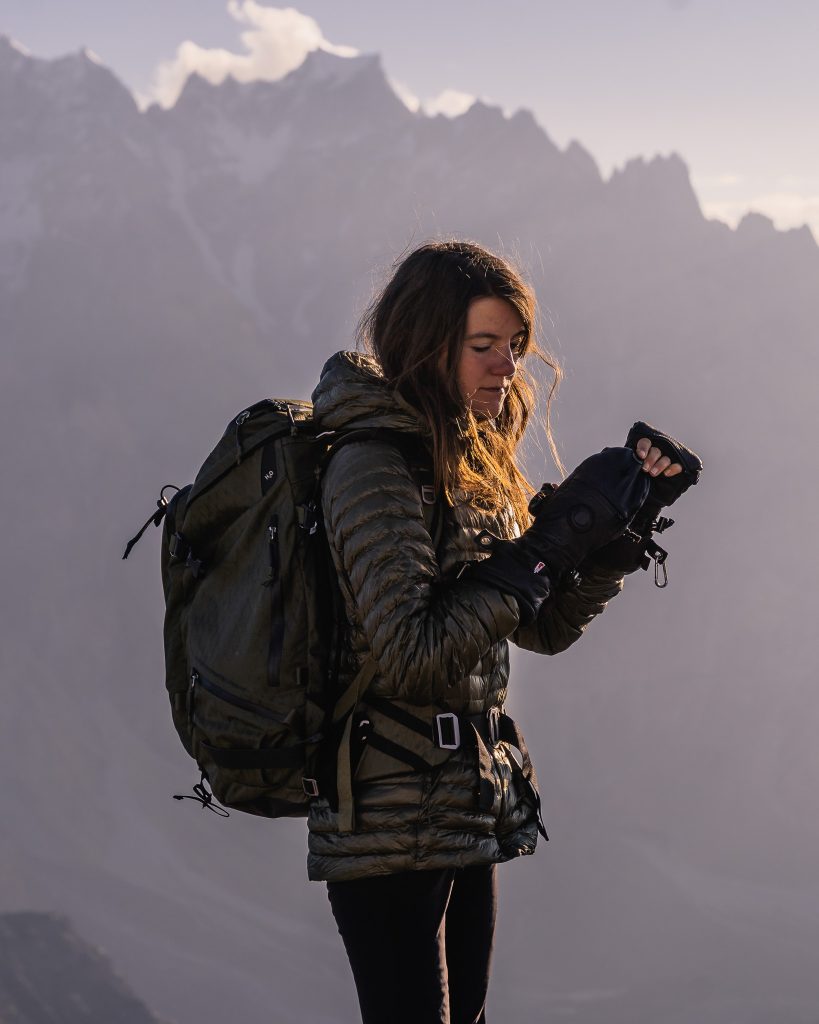
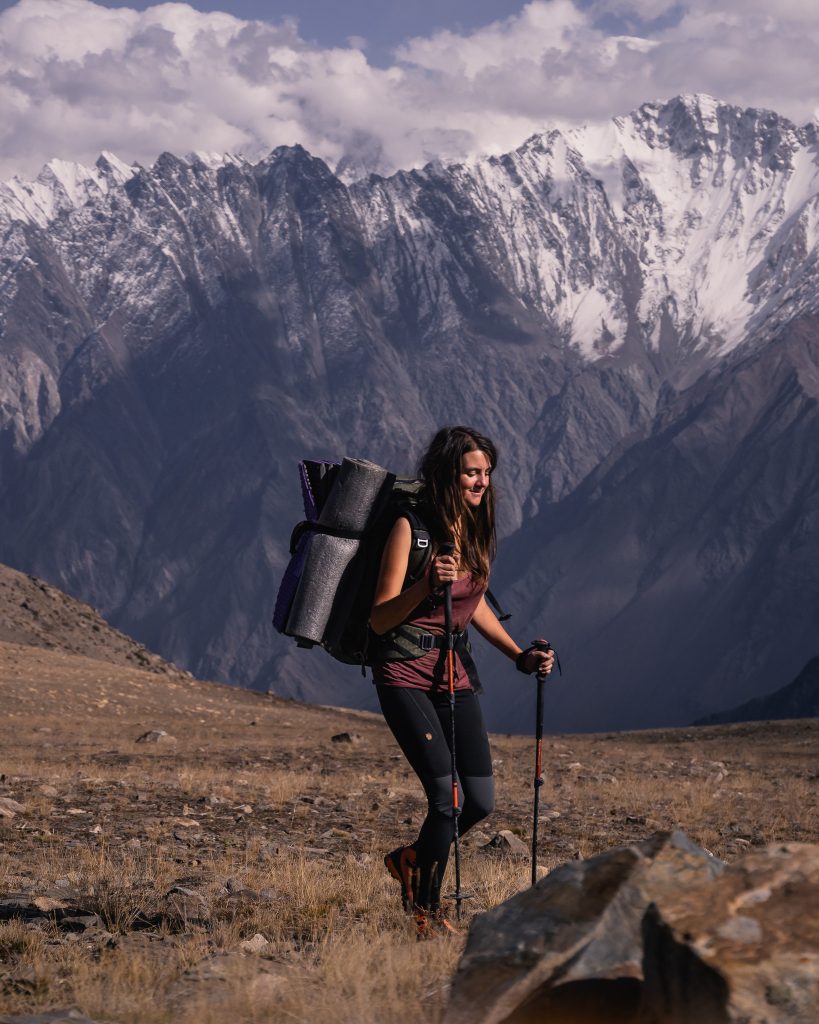
After 2+ years of roaming the world and creating content for international brands, they ended up becoming professional freelancers making videos and photography. They manage social media accounts on various platforms, and they build content strategies for clients. As adventurers and camera nuts, they've neen fortunate to serve as brand ambassadors for multiple world-wide brands. Cecilia is in her element when taking photos while Peter is in love with creating videos. They have no intention to stop travelling anytime soon and after leaving Pakistan their planned destinations for 2023 are India, Sri Lanka, and Nepal.

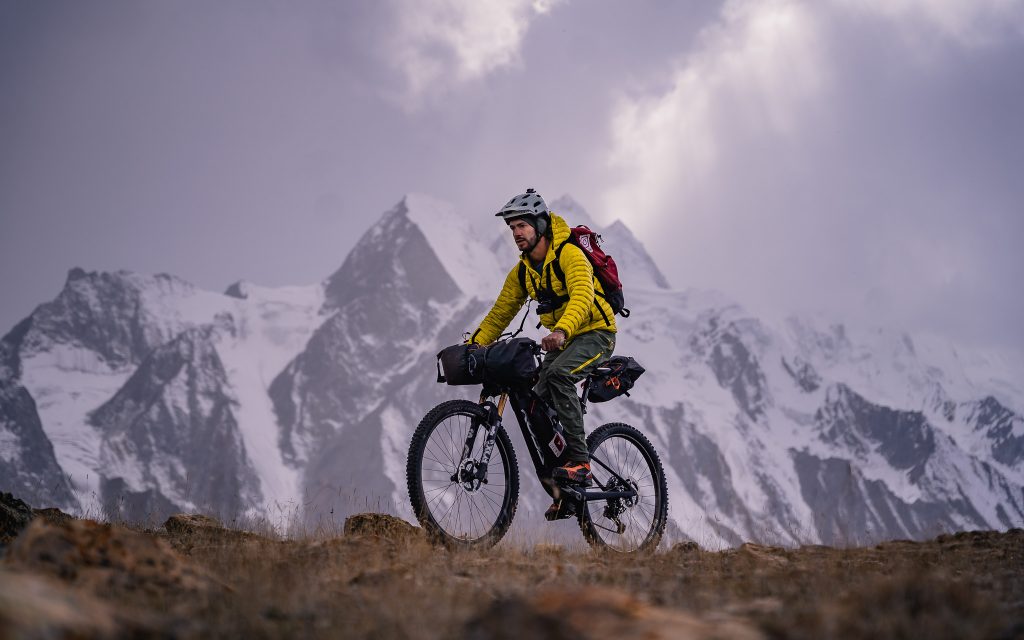

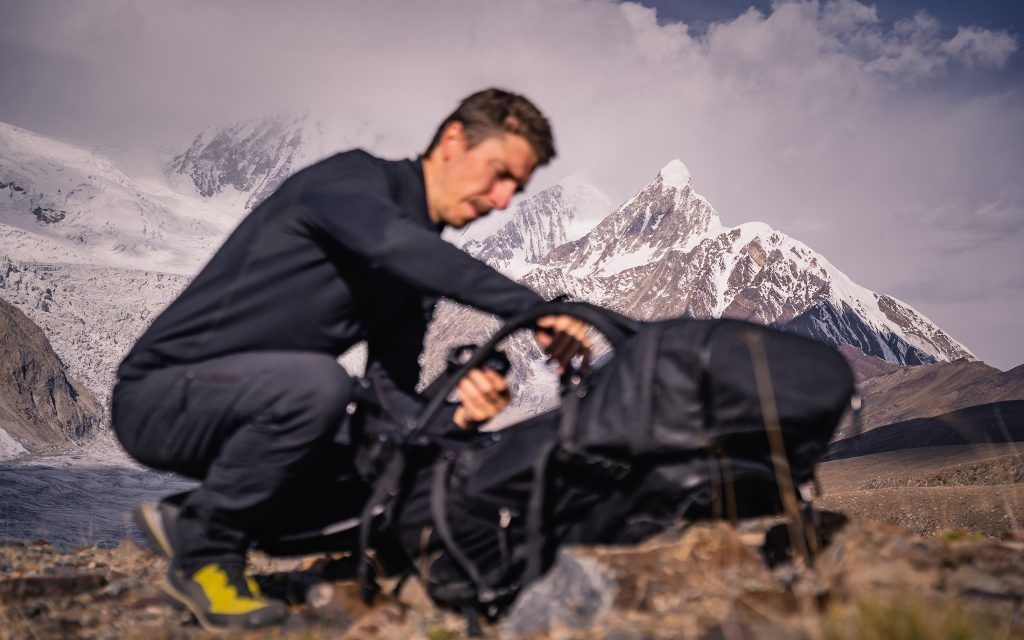



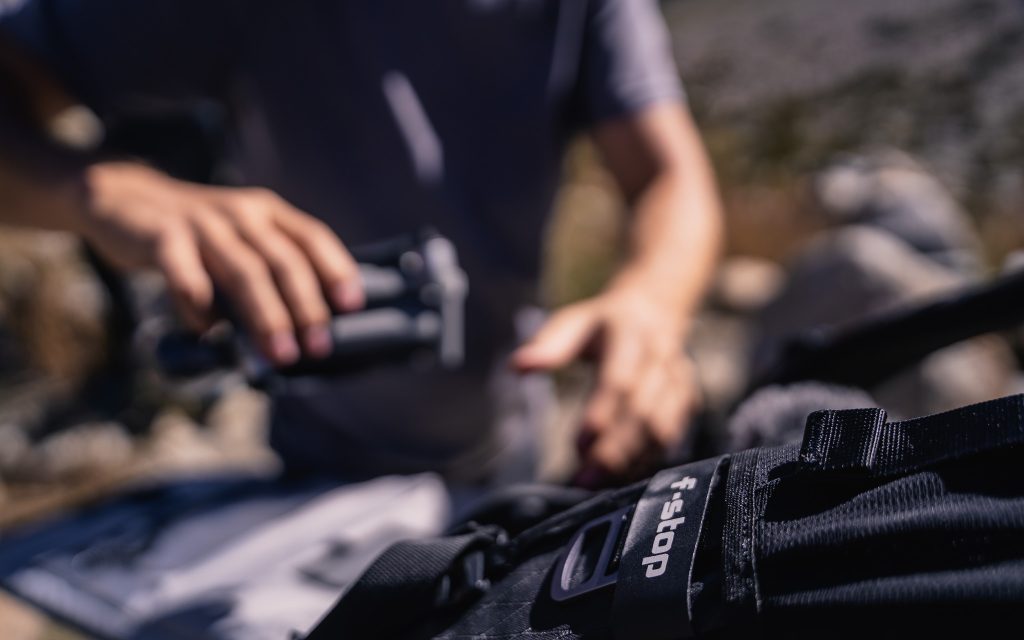

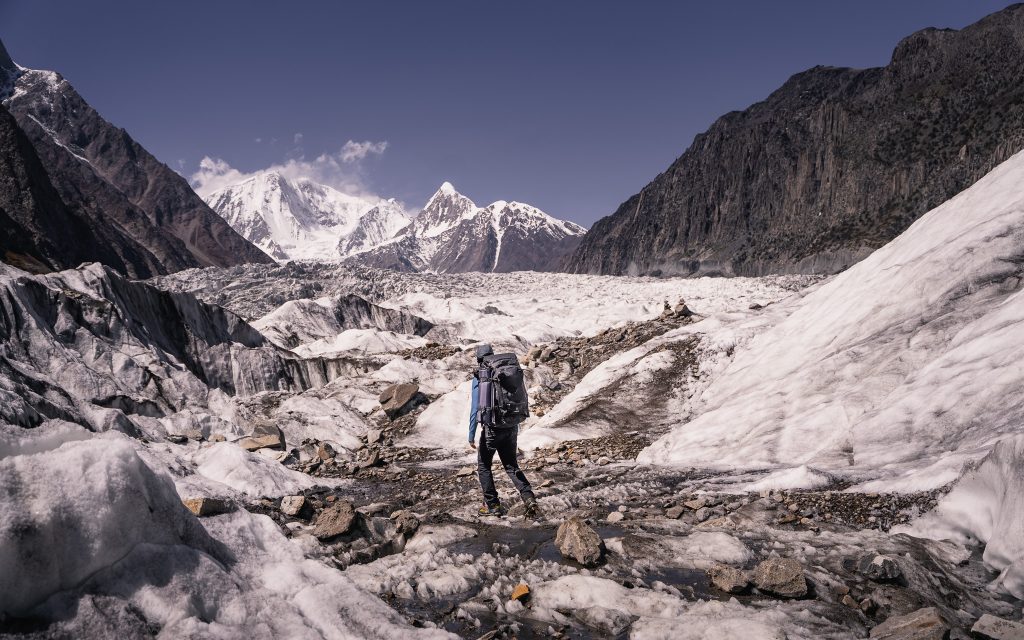
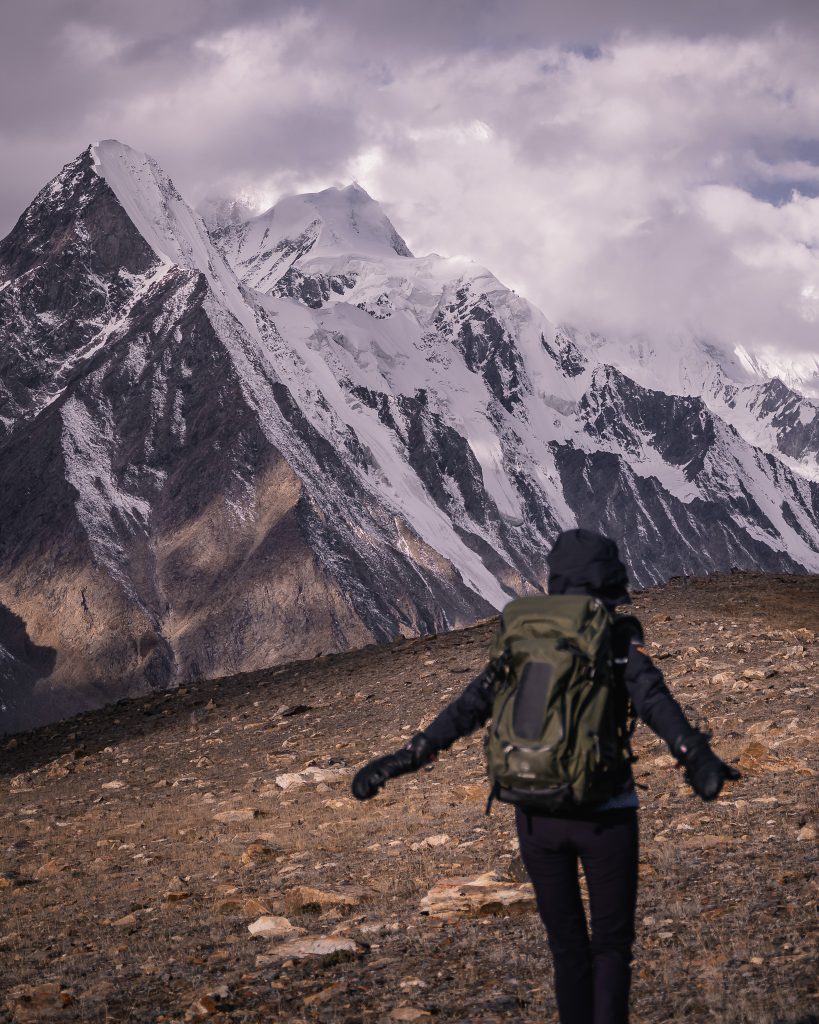
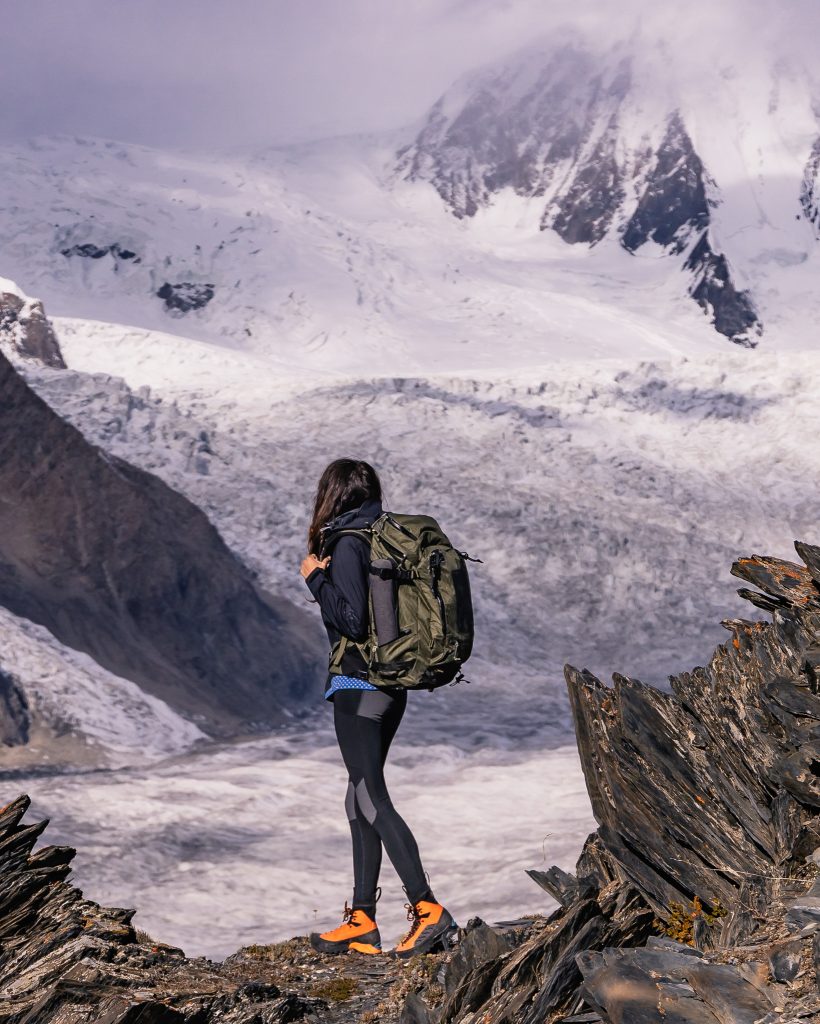

f-stop Ambassador, James W. Fortune, explored an incredible abandoned sea fort with a full set of gear in his Tilopa 50L DuraDiamond® Adventure and Travel Camera Backpack
When James got the chance to explore a long abandoned sea fort, he knew it was an offer that he could not refuse. Built between 1850 and 1852, Stack Rock Fort has been unoccupied and left to the elements since around 1929. The fort provided endless opportunities for stunning photography, but also endless opportunities for equipment to be damaged.
Q. What do you consider when you chose your gear for this adventure?
A. It was very difficult not to pack for every eventuality, but I was painfully aware of how active I would need to be while I was on the fort. I knew that there would be so much to explore across varying situations, so I wanted to make sure I could stay as agile as possible.
In the end, it came down to what would practically maximise my creative output while I was there. This included not only camera gear, but also extra layers, my warm jacket, waterproofs and (most importantly) food and liquids. The boat wasn’t coming back for around 10 hours, so once we were on the island, there was no going back for anything I forgot!
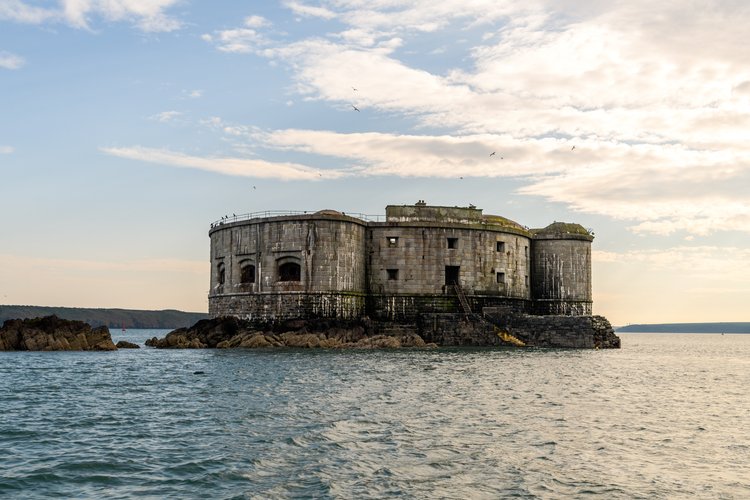


Q. You used the Tilopa 50L DuraDiamond®, what about this bag made it a good fit for this trip?
A.I actually took two bags with me, but only one made it to the fort. My Ajna stayed back at the hotel, but looked after everything else that I took to Wales with me. I paired it with the Small Pro ICU and the Packing Cell Kit to keep my personal items (and everything else that I couldn’t take to the fort) organised and safe. The laptop even fit snugly and safely in there too!
For me, the Tilopa was the perfect balance between size, weight, capacity, and agility. It was big enough to carry what I needed without becoming cumbersome. When paired with the Pro Large ICU, I was able to pack my core camera equipment (Main Body, 14-24, 24-70, 70-200, tripod, batteries and cards, filter pouch), my drone, lighting, spare clothes, food and water, while still maintaining enough agility that allowed me to explore all day with minimal discomfort.

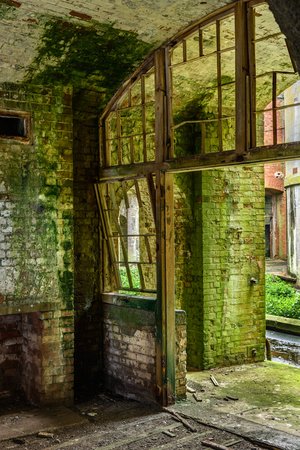

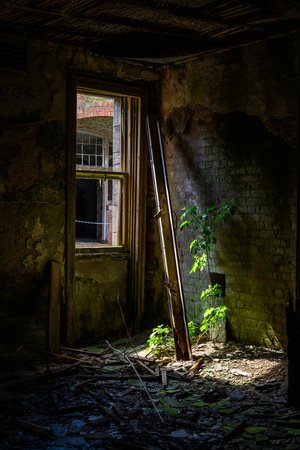

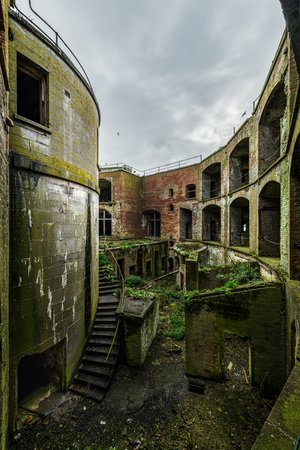
Q. What was the most challenging aspect of this project?
A. The biggest challenge was actually the drive from my home to the hotel. My departure was delayed due to needing to get a tick bite checked out (make sure you stay safe with those things to avoid Lymes disease!). I left much later than I planned, so hit the rush hour traffic. What should have been around a seven hour drive took around eight and a half hours and I arrived well into the night feeling very hungry! Getting up at 04:30 the next morning for an early departure after that drive was almost as challenging as the drive itself, but anticipation quickly melted away the grogginess.
Q. What was your biggest surprise on this trip?
A. The biggest surprise was when the boat to take us back to land didn’t turn up when it was supposed to. I didn’t panic after the first hour, but beyond that I must admit that I was beginning to become a little concerned. It turned out that the tide times meant the harbour couldn’t open to let our boat out, which gave me more time to explore and make use of the late afternoon light. I think I got some of my favourite shots during that window!
It did make a long day even longer, but issues like this become inconsequential factors to absorb when getting the opportunity to explore such exceptional locations.

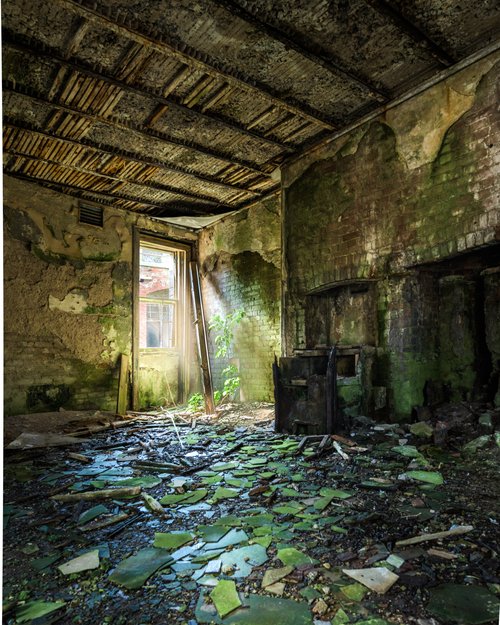




GEORGIA PUBLIC BROADCASTING AIRS "VIEW FINDERS"
f-stop Ambassador, Chris Greer, and his partner Jason Clemmons, host a program about photography and photographers - Renewed for a Second Season!

Chris Greer is a new f-stop ambassador and part of our Pathfinder Collective. Chris owns Chris Greer Photography, and you can find his work on Instagram, too. We met Chris about a year and a half ago as he was in the process of developing an idea which turned in to television program – View Finders. The show is about outdoor photography at little known, but beautiful places, in Georgia. The show is also about the photographers on those adventures, and this type of content is rare on broadcast TV. Chris agreed to answer a few questions and tell us more about his work and the Georgia Public Broadcasting TV show.
Q. Tell us a little about your passion for photography?
A. My love for photography stems from my desire to get out and explore locations near and far in search of beauty. I love hiking and being outside, and I think landscape photography is a perfect activity that can motivate someone to get up early, stay out late, and take the road less traveled in search of a unique composition or a tucked away location that few have seen. While I have traveled the world and experienced some truly incredible places, I also appreciate the simplicity of just getting out and finding locations near my home that I never knew about, and that offer tremendous potential. It is calming, peaceful, and a fantastic way to decompress from the stresses of everyday life.

Q. What got you started as a photographer?
A. When I was 12, my dad handed me a Pentax K1000 with a few rolls of film. This started my photographic journey and forced me to learn things like aperture values, shutter speeds, ISO ratings for film, and so much more. I think shooting film really made me appreciate the small nuances of compositions and forced me to be much more deliberate with my photography. All those images were going to cost money, and so I really thought about each click of the shutter. Now I am strictly digital and can enjoy the luxury of unlimited captures, but my roots are in film, and I think it made me a better photographer.
Story continued below.
Q. Tell us about View Finders Television? What inspired the concept for View Finders?
A. Here in Georgia, there is a TV show called “Georgia Outdoors” that takes viewers to locations all over the state and educates them in some way. I was watching it one day and thought, “My friend and I could do something like this, but with a very different approach.” I had a contact at Georgia Public Broadcasting (“GPB”) which is the PBS affiliate for Georgia. I set up a meeting to pitch the idea to the station. The concept is to tell the story about two photographers who were in search of beautiful locations to photograph. Along the way they would meet with experts who would talk about why these places need to be protected and preserved for future generations to enjoy. The team at GPB loved the idea and told us to bring them 5 episodes for the first season, and that is the genesis of “View Finders.” Soon after, we had REI, Troncalli Subaru, Explore Georgia, and Terrapin Beer Company all signed on as sponsors, which gave us the funding to make the show great. It was a very exciting whirlwind couple of months. GPB has been very encouraging about the project from the start, and they are excited about developing the show even further which means there will be a season 2.
Q. You are preparing for season two, so can you tell us a little about some season one highlights?
A. Season one was very exciting and a bit nerve-wracking. I don’t have a background in TV production, much less hosting a show. The good news is that my buddy Jason was with me the whole time, and he served as a fantastic co-host (and is an outstanding photographer). We get along very well, and so I think the audience feels that connection in each of the episodes. From trekking all over Cumberland Island to paddling across the Okefenokee Swamp in search of a camping platform, we had a lot of outdoor adventures and plenty of fun as well. We joke around with each other a lot and so the audience gets to see our personalities as well as our love for photography. I think that it really created a strong connection throughout season 1. A few memorable moments included camping in the middle of a swamp surrounded by 15,000 alligators and hiking all the way to the top of a mountain to find the Chattahoochee River headwaters, which is truly just a small bubbling spring coming out of the ground.
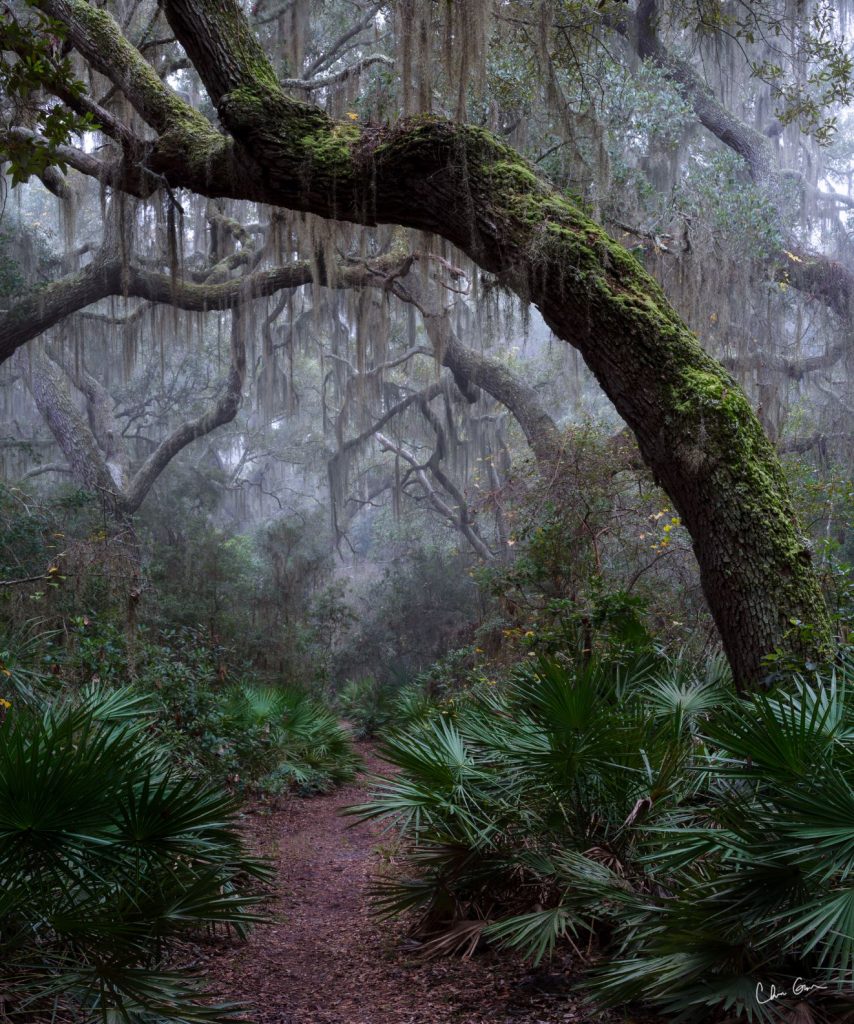

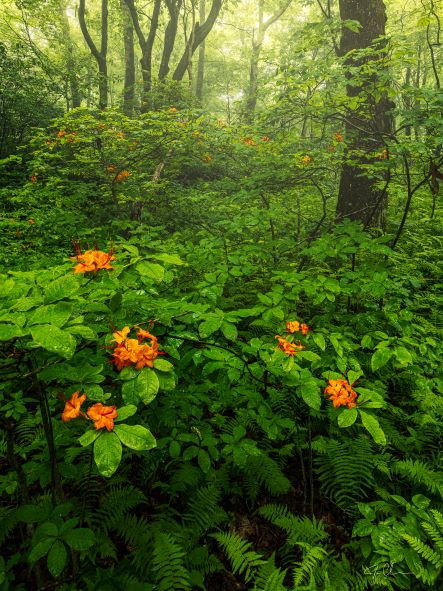
Q. How does View Finders fit into your photography mission or vision?
A. I love to take photos, and I want others to see and appreciate my work. I strive to get better every day, and I am always pushing myself to try new things or step outside my comfort zone to try to improve my photography. Also, I want to just put myself into the position to take a great image, which means getting out into the landscape often and searching for great light and great compositions. View Finders fits into that perfectly, because the entire show is driven by the desire to take great photographs, and it also exposes my work to a large audience. It has been a tremendous project and I am very hopeful about where it might lead over the coming years.
Q. How can readers watch season one?
A. Readers can watch the entire first season by visiting View Finders
Watch the entire Episode 5 - Okefenokee Swamp https://www.pbs.org/video/okefenokee-swamp-b759q9/
Matt Buckley is a digital creative with a track record of delivering high quality content for a range of clients across a number of sectors including lifestyle, travel and outdoor leisure. Working alongside brands to develop a unique and eye-catching visual style, Matt predominantly shoots content with the story at the forefront, whether it be photos or video to engage the audience and develop a unique connection with the brand. His work has been used extensively across his client’s social channels and Matt has also shot a cover for the Telegraph Magazine on behalf of the Highland Liquor Company. Most at home in the mountains and wilderness, Matt tends to collaborate with brands that have nature and adventure at their core and he shoots content that enables brands to clearly communicate their values to their customers.
Matt Buckley 

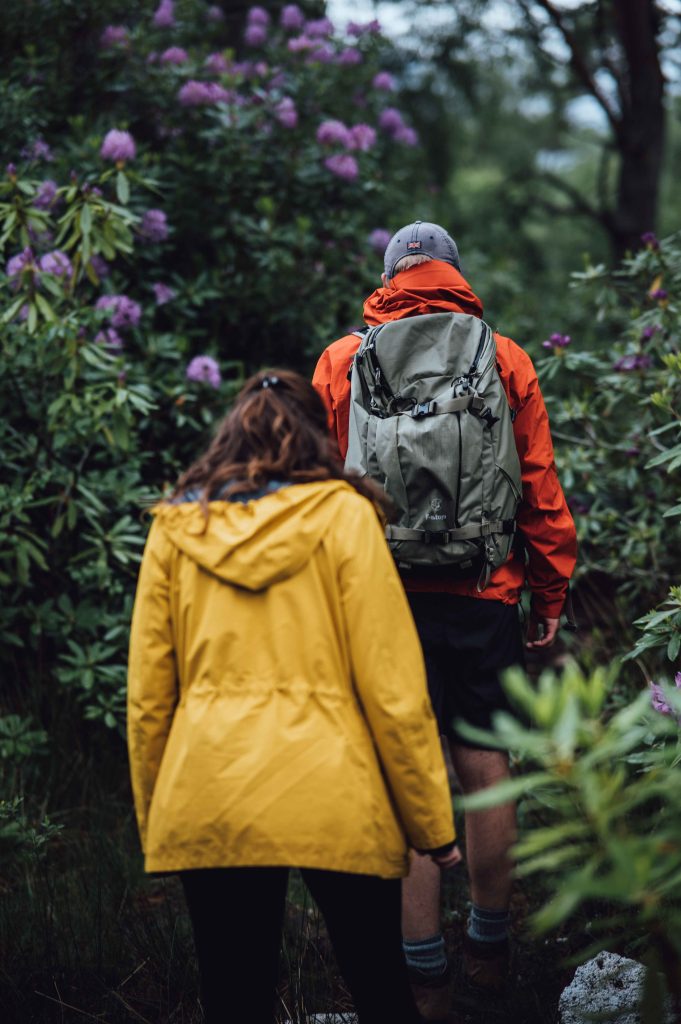
I’ve been on many trips to the Scottish Highlands over the past years, it’s a place that I am incredibly fond of and a huge contrast to where I spend most of my time; the outskirts of London. It’s something about the landscape that inspires me; it’s bleak, rugged and unforgiving but it just feels right. On this particular trip, I was heading up to shoot for a number of clients. I brought a huge variety of kit to cover all eventualities and locations; I’d be shooting on the water, fancy restaurants and up 3000ft mountains. I primarily shoot for brands in the outdoor leisure and luxury goods sectors and the highlands of Scotland make a great backdrop for these kinds of shoots. I was joined by 2 of my close friends and girlfriend; we’ve all known each for years and its always great when we go on a trip together.
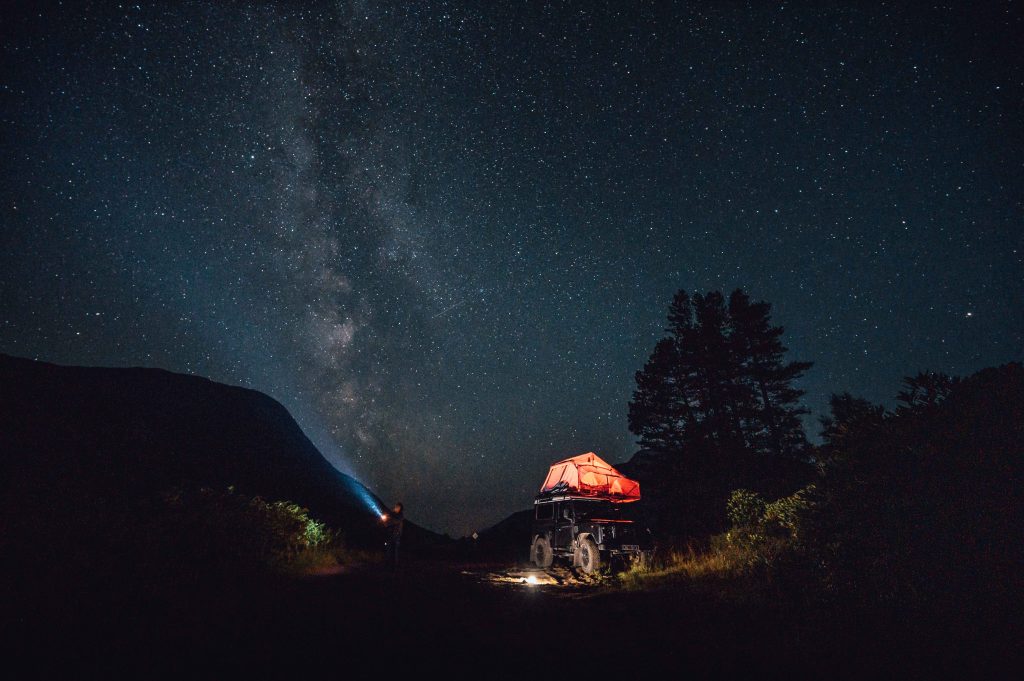
The biggest challenge when shooting in mountainous areas is always the weather; one minute it can be bright sunshine, the next the cloud has dropped and the rain has set in. Maximising your time for the conditions is a skill in itself but it all stems from being organised. Making sure the cameras are always charged and cards always clear so that when a window of good weather appears, you can get out and capitalise of it rather than rushing about trying to find a charged battery or discovering your memory card is full from a previous shoot. Reading and interpreting weather forecasts is also a useful skill when operation in mountain environments; even if it only provides a vague idea of what the weather might be, it can save a lot of time when planning and make sure you don’t get into difficulty out on the hills!

I’ve always found it’s difficult to convey the size of the mountains and the general location, so I always find including a person in the shot gives the viewer a point of reference to begin to appreciate the scale of the environment. As my work has transitioned from personal photos to more commercial shoots, I find my focus changing from holiday pictures to seeking out the most unique angles to give my content the edge in an increasingly crowded world. Everyone loves to see the view but now I am thinking about the tight, detail orientated shots alongside capturing stunning vistas to provide the client set of versatile and striking assets.


I normally always shoot using a zoom lens, but on this trip I found myself more and more reaching for a prime whether it be a 50mm or 85mm. Whilst a zoom is great for capturing everything from wide angle to telephoto, it often becomes the easy way out and I was finding I wasn’t pushing myself creatively. Using a prime forces you to seek out the unique angles and shoot in a way that was new to me and I found myself really enjoying the process of using a prime. I was forced to really think about my composition and framing more which was really refreshing. It was made easier by having the ability to carry a range of lenses in my f-stop Ajna pack so I didn’t have to worry about ever missing a shot because I didn’t have the right lens.
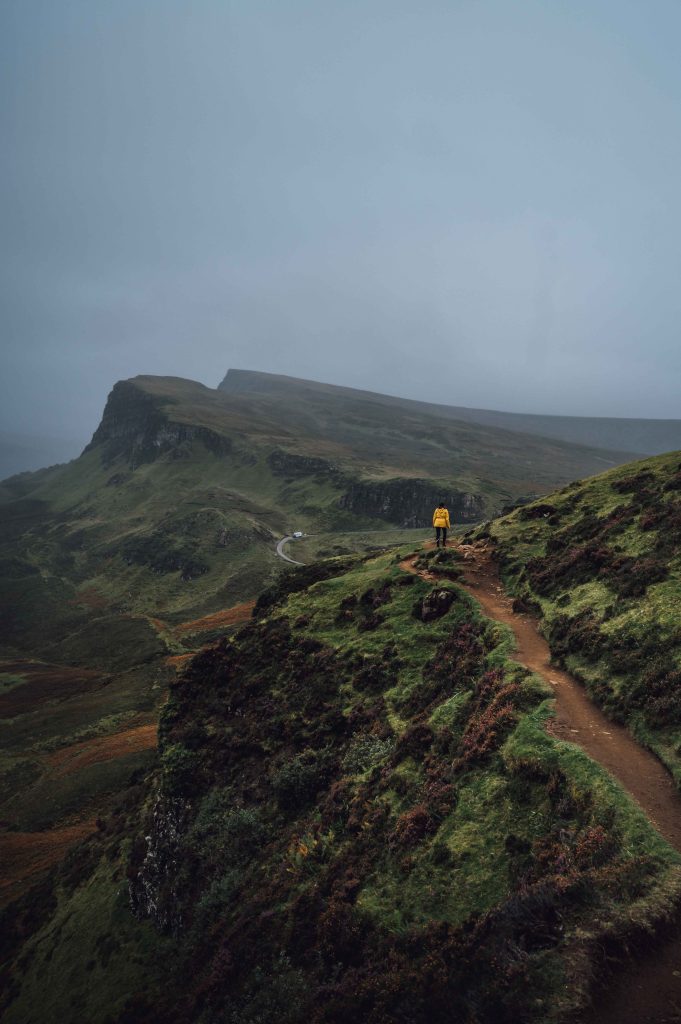

I would describe my visual style as quite spontaneous, I don’t like to overly plan my shoots down to individual shots. Obviously if the client is wanting a specific shot I will engineer the situation to give me the best angles etc, but I much prefer to leave the talent to interact naturally as I feel this produces much more organic images. I will often have an idea of the kind of shots that I want to capture on a shoot and I will ensure to position myself to get the best opportunity of capturing it but more frequently I find myself providing minimal direction to the talent because the more comfortable they are, the better the end result will be.
Whilst I am predominantly a photographer, I also shoot video frequently and I find almost the opposite approach is needed. I will direct much more on a video shoot because you’re capturing a much greater period of time than an image so its much more unlikely that the talent will do exactly what you want without asking. Going forward, I’m looking to further develop my style and portfolio and hopefully work with more brands that share a similar philosophy. I’m also looking forward to travelling a bit more as the world begins to open up again post COVID.
You can check Matt's work on his Instagram and Website.

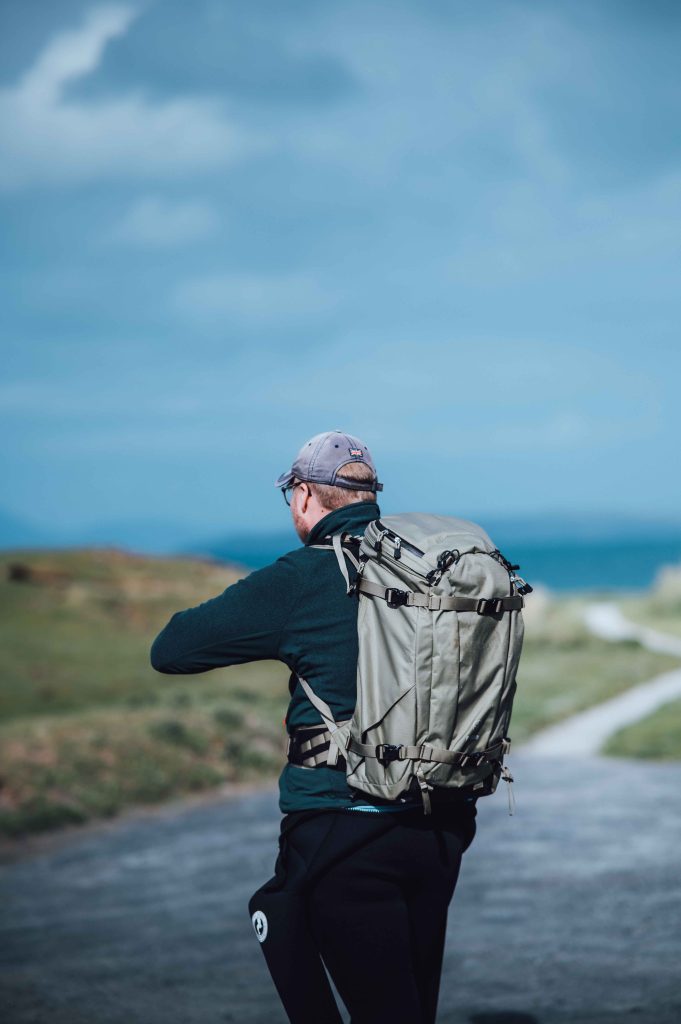
Ross is a 30 year old chemistry teacher from the west of Scotland with a passion for scuba diving and trying to show off some of the unbelievable marine life so many people don't realise there is in a country known more for its epic mountains and rugged landscape. Ross started diving in 2016 and in the last 3 years really begun to take his underwater photography seriously. He fully admits he's no professional photographer, marine biologist or diving expert, he's just someone with an expensive camera who often presses the button and hopes for the best.

When you think of Scotland what comes to mind? Epic mountain ranges? Majestic lochs? Historic castles? But what about what lies beneath the waves? I think it’s fair to say Scotland’s beauty is well documented, but there’s a whole part of our wee country that I believe has been overlooked for too long… Our underwater world (and I don’t mean the elusive, mythical Nessie)! Ok, let’s be fair, Scotland isn’t exactly the diving capital of the world. When you think of places to go for scuba diving I’m not sure it would appear in many peoples top ten, but you might be surprised to find there is some spectacular diving to be found in Bonnie Scotland. Now, full disclaimer, I’m absolutely no expert in diving, marine biology or even photography. I’m literally just someone with a slightly fancier camera than the standard “go to” for diving GoPro and a real passion for showing off our unbelievable, and very much unappreciated, aquatic world.
Diving is something I always wanted to do from a young age, but I never really envisaged myself in the freezing cold lochs of home, and therein lies the first big challenge of diving in Scotland. Even during our summer the water temperature barely gets above 12oC and in winter… well let’s just say I’ve had to break the ice on more than one occasion to enter the world beneath. But, saying that, that’s what drysuits and thermals were designed for.
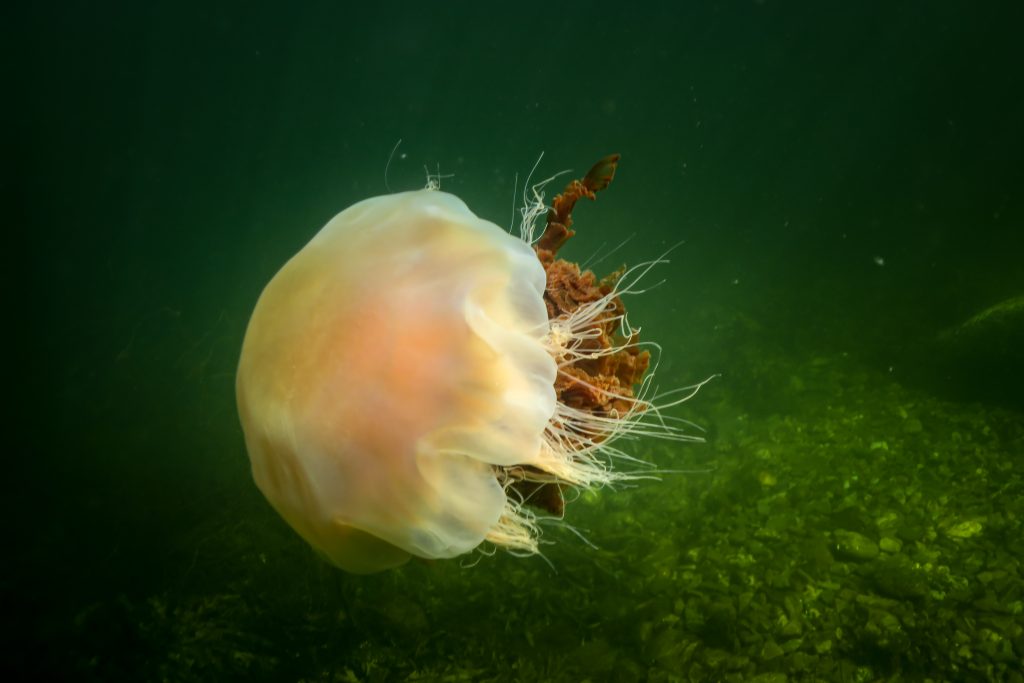

Ross Mclaren 
There’s a saying in the UK about hiking by the famous Alfred Wainwright; “There’s no such thing as bad weather, only unsuitable clothing” and it can be applied to diving as well. With the right kit, there’s no reason not to go exploring. The biggest issue we find, and it is a real pain for photography, is the visibility. It could be an absolutely perfect day on the surface, but put your head beneath the waves and you could be struggling to see your hand held out in front of your face. There’s no guarantee’s when diving here, but I think that’s part of the allure, part of the sense of adventure. The unpredictability can be frustrating yes, but at the same time it’s what keeps me coming back time and time again. You never know exactly what you’ll see (sometimes IF you can see), you might find the “normal” life; crabs, squat lobsters, but equally you could find the elusive octopus, nudibranch, bobtail squid, the list goes on.
People look out at the dreich (that’s a good Scottish word for dull and boring) steel grey waters of our coastline and lochs and often think there can’t be much in there in terms of life and colour, and I’ll hold my hands up, I did too until I started diving. But, that couldn’t be further from the truth! Ok… I’m not saying we’ll ever quite match the cacophony of colours you’ll see in more exotic locations like the Maldives, but there’s a lot more than you might expect. There have genuinely been so many highlights to my diving adventures here at home, probably too many to recount in just one blog, so I’ve tried to pick just a few.
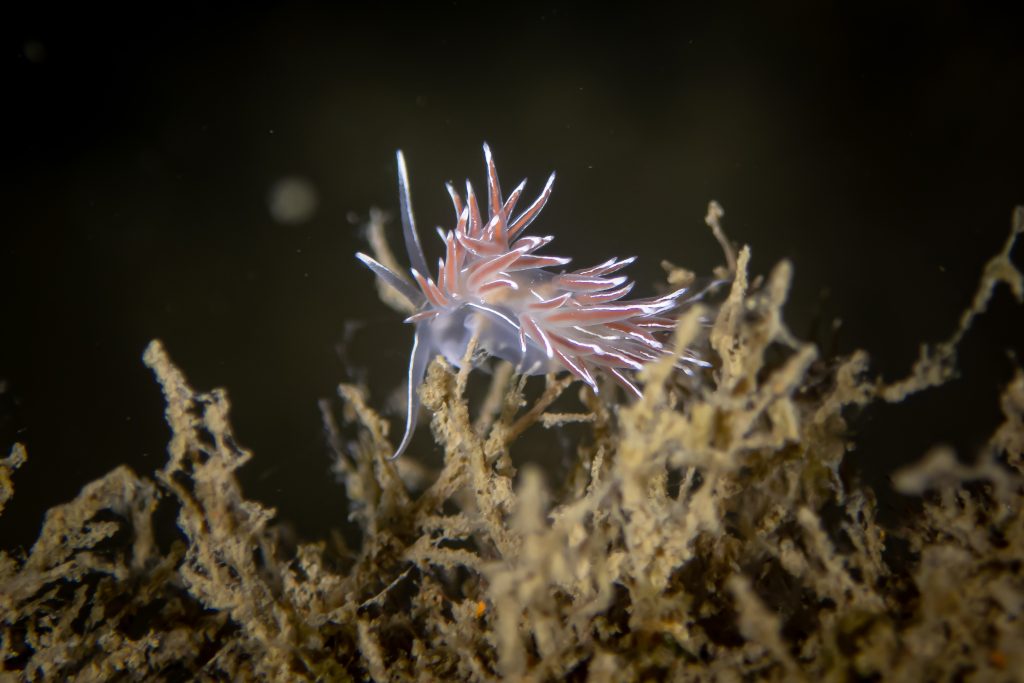

Ross Mclaren 
One of the most beautiful marine species I find photographing, are anemones. We have such an abundance of these from deadmens fingers, to fireworks; the colours of them are so varied and unbelievable. The patterns and shapes they make as they glint in the light of the torches and with the movement of the water is magical. Most of my photos are 99% luck and none can be more representative of that than my anemone that kind of looks like a face. This was actually taken before I got my “big” camera, so was just on my GoPro and I’ll be 100% honest, I didn’t even know I’d taken it until I got home.
Nudibranch are basically tiny sea slugs, and they come in so many varieties and colours and these wee guys are just incredible to see. If you think macro photography is difficult on land, you should try it at 20m underwater with current moving you and the nudibranch about. I’m so lucky to have a dive buddy who has got the eyes of a hawk and can spot these tiny little slugs when usually I’d overlook them. Getting them in focus can be really difficult for me, but they are just incredible to capture, especially in such poor visibility and natural lighting. You might not think it, but Scotland does actually have a shark or two… ok… they’re not Jaws, but the dogfish (or catsharks) are actually pretty common here and these guys are really docile so make for absolutely perfect subjects.
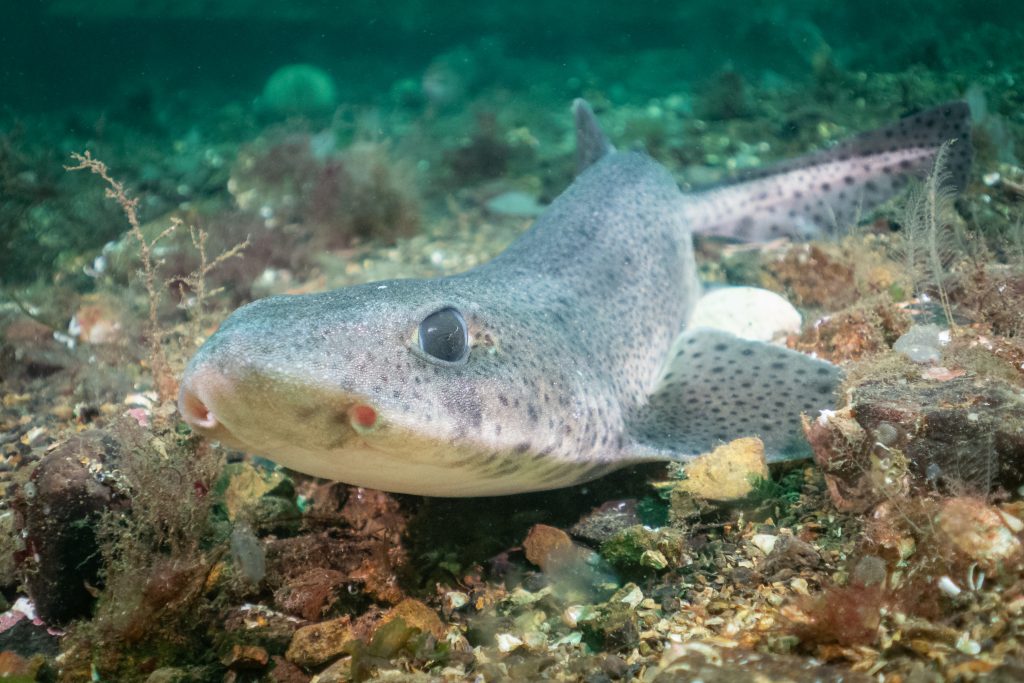
Ross Mclaren 
Probably one of my top 3 shots is a testament to the statement I made about never knowing what to expect. Cuttlefish/bobtail squid aren’t completely uncommon here, but usually they’re nocturnal and I’d never actually seen one. So when we headed down to about 38m at one of our usual dive sites (at 11am) we were completely shocked to find one of these amazing creatures resting on the seabed. They are incredible and again the colours are just magical. Scuba diving in Scotland definitely isn’t “easy”, you never know exactly what to expect, what the conditions will be like and if you’ll find anything “exciting”, but it’s that unknown that keeps me coming back for more.
Underwater photography isn’t easy either, again especially in Scotland. For every “acceptable” image I find I’ve got at least 25/30 terrible ones (and that’s probably being generous!), but the anticipation of that one shot is what spurs me on, pushes me to keep going, keep exploring. I’m no expert photographer (in fact I genuinely don’t even consider myself a photographer full stop), this isn’t a job for me (though I would love to be able to do it as a career), I’m just a guy with a semi-expensive camera (I haven’t told my wife exactly how much it all cost!) who loves to take photos of a side of Scotland that is unseen by so many.
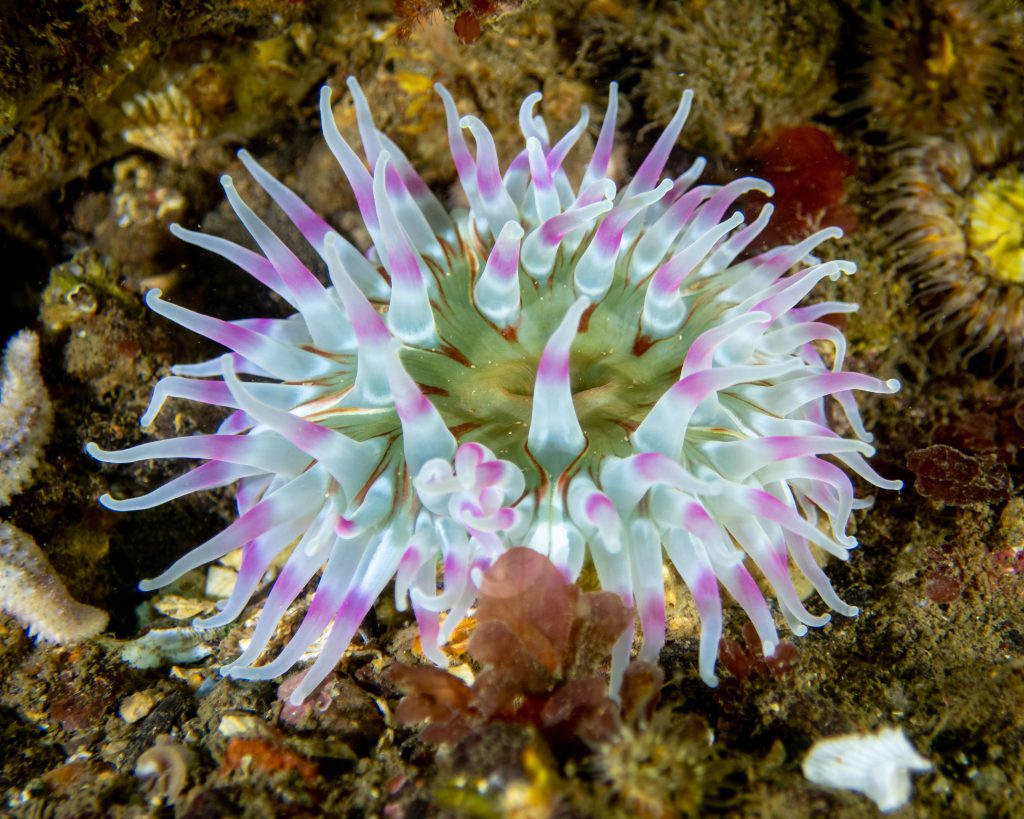
Ross Mclaren 
With our first child on the way my diving adventures will have to be curtailed for the time being; I don’t want to be 20m underwater taking my 17th photo of the same crab from a slightly different angle when baby arrives, somehow I’m not sure my wife would appreciate that. But there is still so much of Scotland’s underwater world I want to explore and hopefully one day I can share my passion with my children.
Scotland isn’t the diving capital of the world, we’re not going to suddenly become a top dive destination on many divers bucket lists. BUT we do have some incredible marine life, with such unbelievable colours! Although it’s not the easiest diving you’ll ever do, when you do get that moment it makes it feel all the more special!


You can find Ross's work on his Instagram and Facebook.
Joffrey Maluski is a French traveler and photographer based in South East of France. His work is mainly focuses on the outdoors adventures and landscape. He wants to inspire people to escape and feel more free outdoor. Often in the mountains, bivouacking and enjoying the best lights of the days. He is passionate about outdoors activities (Hiking, Climbing, Highline, Rope jump…) and finds his inspiration in Nature’s open spaces. The past few years he travelled in different countries like Iceland, Norway, Italy, Switzerland… that made him want to start living full time on the road from Canada to Guatemala for 3 years (2017-2020). Back in France since January 2020, he is now planning different bikepacking trips in France and at the international while creating content and documenting his experiences through his photos and videos.
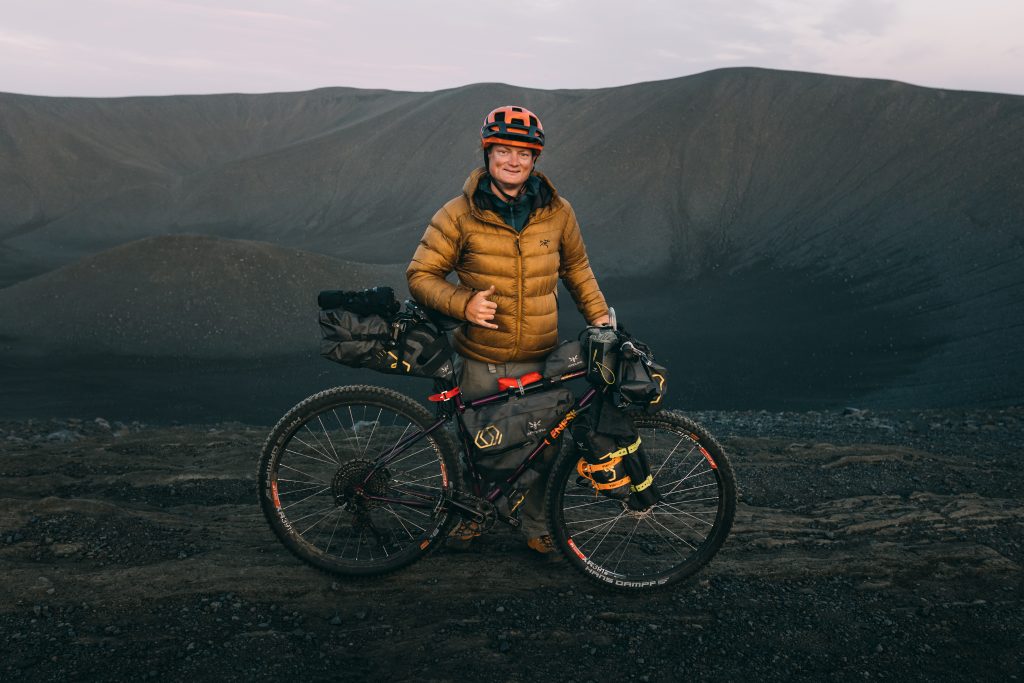
Joffrey Maluski 
It was a three months bike packing trip to the most remote place of the Icelandic highlands dominated by huge glaciers, ashen deserts and mighty lava structures. A demanding route due to the the extreme weather conditions and many rivers to cross. After two bike packing trips in France, one in the French Pyrenees doing climbing, highline, mountaineering and a second one in the French Alps by bike and ski touring, I was looking for a new destination that will challenge ourself. As I’ve been in Iceland in 2016, I knew it would be a great trip with epic landscapes and I always wanted to come back to explore more of the interiors, experience it in a deeper way. Two of my friends joined me on this journey, Léo-Paul Darse and Katia Bach. I know Leo-Paul since many years, we did lots of mountains and highline projects together, as well as the bikepacking trip in the French Pyrenees. So it was a pleasure to share this new adventure with them.
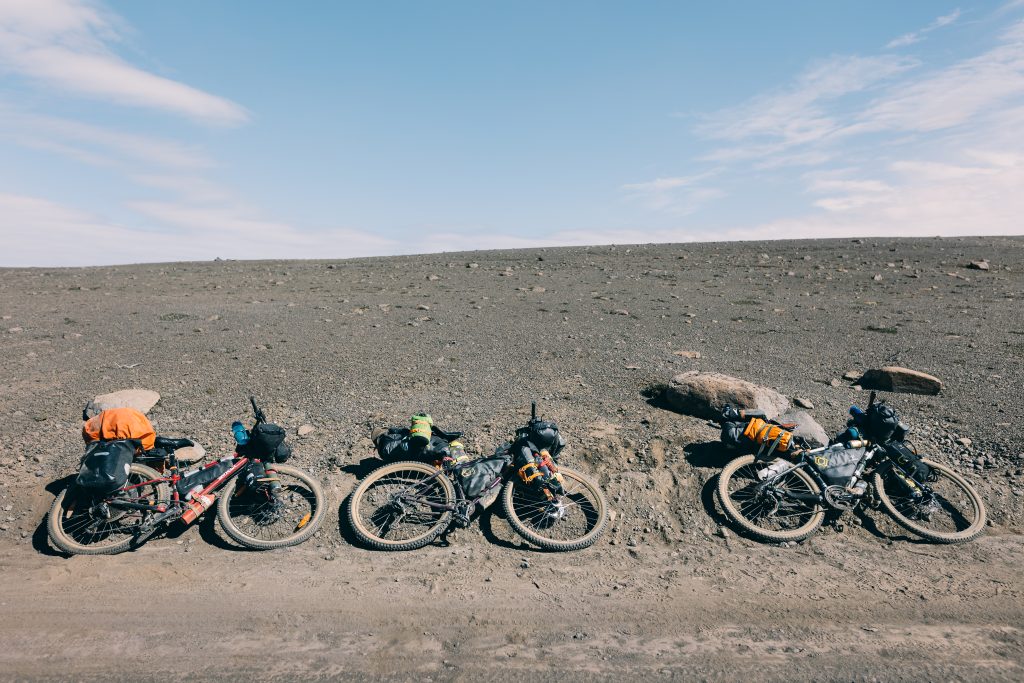
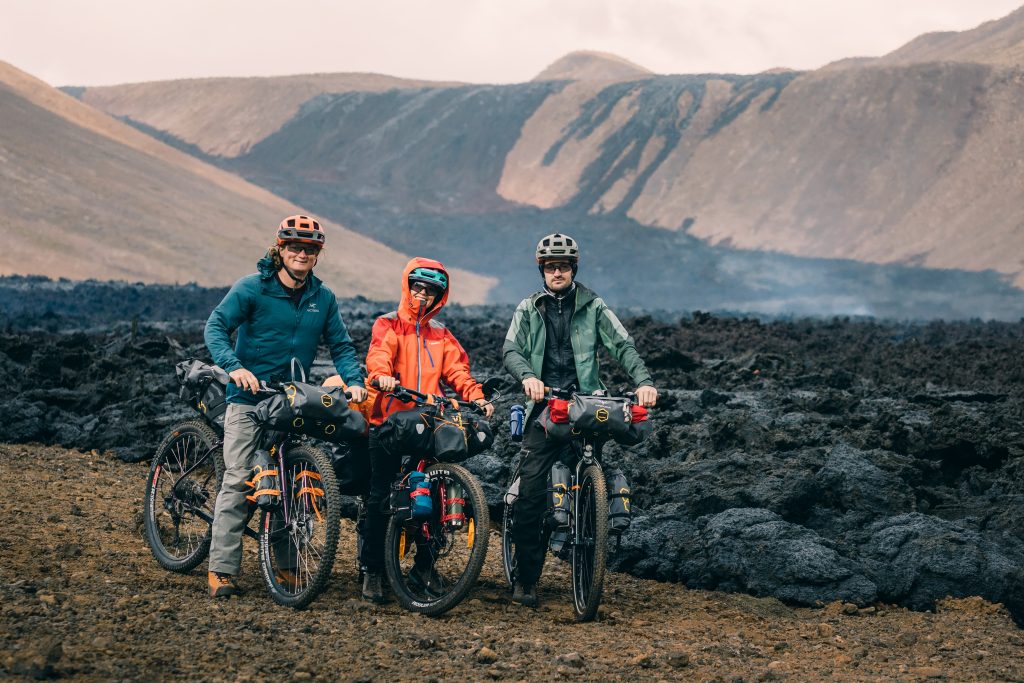
We had two main challenges, the rivers crossing and the weather, specially the wind. We had a few really hard day, like we can not stand up on the bike.About the rivers, the most difficult were the ones north of Hofsjokull glacier. They are dangerous, can be hight, powerful and can also had some quicksand. It’s a wild part of Iceland that even super jeep don’t often go. We actually haven’t seen anyone there. We started the days at 4/5am to get to the river early as possible, so that it was still cold and the water levels were low. Sometime we also had to go up the rivers to find a better way where the river is larger, so the water is lower and less powerful. Finally the river crossing became our favorite days, it was like a game, we had to find the best way to crossed them. Cycling against the wind learn you a lot, it’s a huge work on yourself, your motivation and mindset. It’s really exhausting but you have to forgot it and keep going. A friend texted me this when we where in Iceland : Wind is like life, sometime you fight, sometime you fly. It’s definitely true in Iceland!
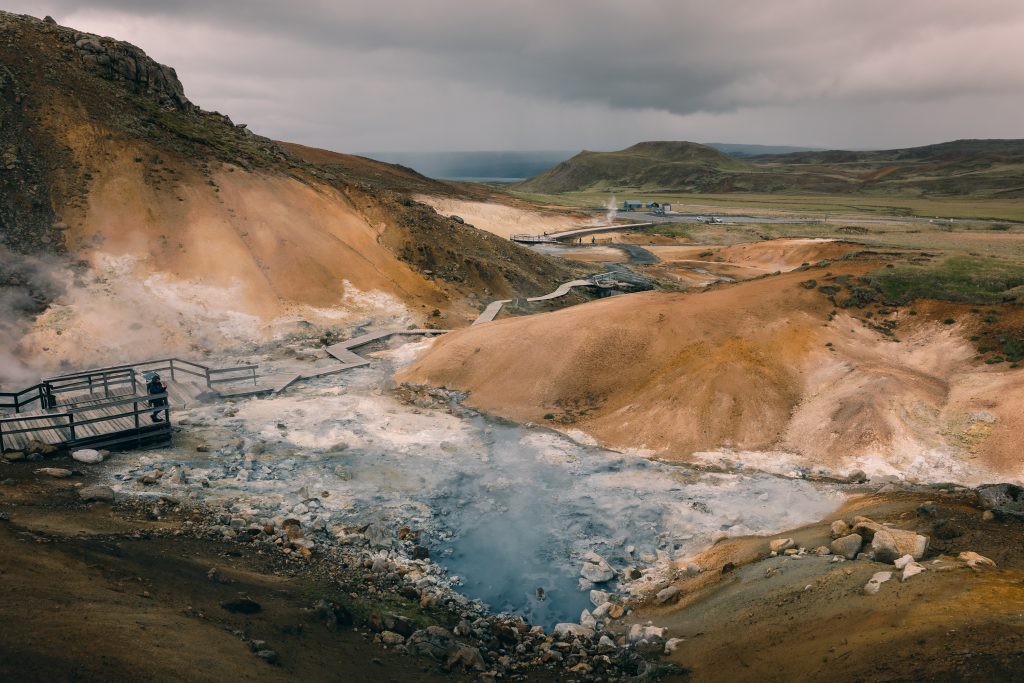
Joffrey Maluski 
The old f-910 from Askja to Niydalur is truly amazing, you are in the middle of Iceland, cycling on black sand along and pretty close to the huge Vatnajokull glacier. Everything is far away, you fill so lonely, experience something unique and vibrant.The old f-910 from Askja to Niydalur is truly amazing, you are in the middle of Iceland, cycling on black sand along and pretty close to the huge Vatnajokull glacier. Everything is far away, you fill so lonely, experience something unique and vibrant.The old f-910 from Askja to Niydalur is truly amazing, you are in the middle of Iceland, cycling on black sand along and pretty close to the huge Vatnajokull glacier. Everything is far away, you fill so lonely, experience something unique and vibrant.
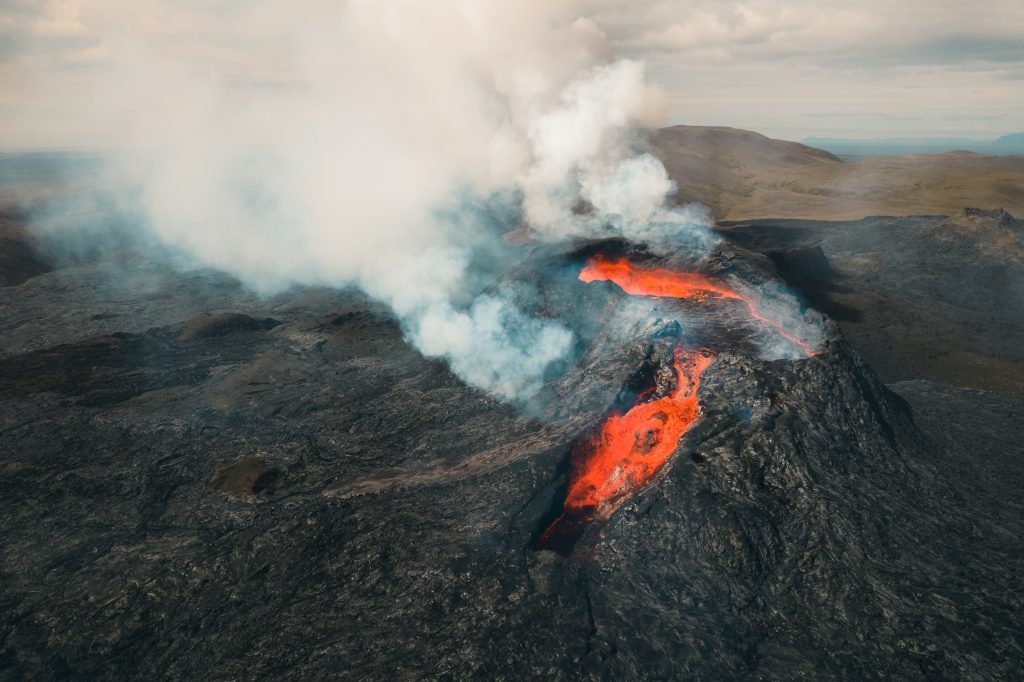
Bicycle touring and bikepacking are not reserved for over-trained cyclists, everyone can ride at their own pace and our body quickly adapts to the difficulties and the efforts that are required. I also think that with a good motivation and mindset we can go very far! Just get started and you will see, it rolls almost by itself!
About the equipment, it’s important to not hoard yourself with unnecessary things, often due to a fear of lack of comfort. If your budget allows it, try to favor quality and light equipment but keep in mind that you will find the equipment that suits you the best as you go on an adventure and gain experience!

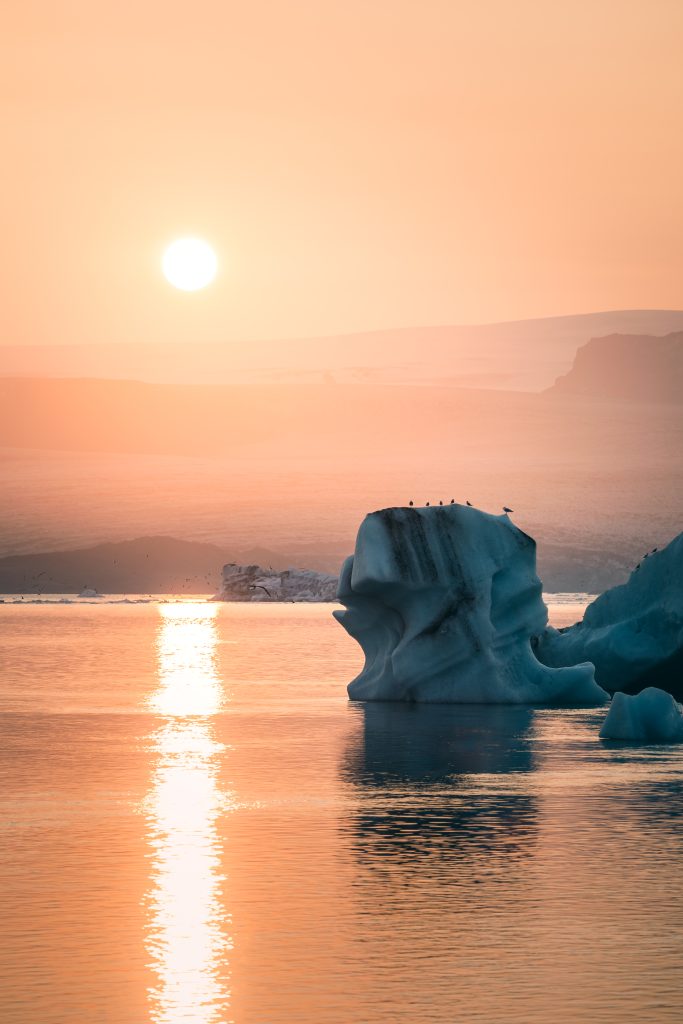
Joffrey Maluski 
I have a ton of bikepacking trip ideas in mind, the next big one will probably be in Finnish lapland this winter. I would love to cycle in the middle of the winter landscape and aurora borealis. I’ve been on this trip with the Canon R6 and 2 lens (Sigma 24 1.4 Art and Canon 70-200 F4). Also bring a Dji Air 2s, an Insta360 one x2 and a GoPro 9. All the stuff was in a f-stop Tilopa 50L and Medium Slope ICU.
You can check Joffrey's work on his Instagram and Website.
Dany is a professional photographer specializing in corporate, architecture, landscape & travel photography. He was born and raised in Lebanon, studied interior design and painting. Years ago he left his home country and became an expat, moving to different countries in the Middle East. Dany won a couple of awards and was chosen to be a judge for different photography competitions taking place in the Middle East. He conducts different workshops sharing his experience with those who like him started out as hobby photographers, might remain hobby photographers or follow their dream and take it to the next level.

I visited Namibia a couple of years ago, and I started dreaming about going back as soon as I returned! I wanted to spend more time and visit more locations in the vast and beautiful country. I had just two weeks to cover as many locations as possible, which presented a real challenge because the area I wanted to cover is vast. So, logistics planning was very important to make sure we had food, water, and fuel. Another reason I chose Namibia is this trip gave me an opportunity to explore the medium format camera as a Fuji ambassador. Additionally, I am beginning to prepare for a series of landscape photography workshops in Namibia.
We set out as a team of three on this adventure. Along with me came my friend Ayed Tadros, a corporate lawyer and a skilled hobby photographer who had never been on a long camping trip, so we thought he might enjoy this adventure. The third member of the team was Lena Oberhofer from f-stop who and documented the adventure.
Dany Eid 
With more than 4000 km, early mornings to catch the first light and also late nights (the sky is breath taking for Astro photography) we were always chasing after the best light. You don't want to miss any rare opportunity but at the same time you need to think about how long you'll be needing to drive to your next spot, when to prepare food, when and how to enter nationalparks, what logistical rules there are and much more.
One of the biggest challenges also came before the trip. In today’s world, international travel can be quite challenging. I live in Dubai. I’m a Lebanese passport holder, and Namibia required a visa. The nearest Namibian mission where I could apply for a visa is in Cairo, Egypt. I was lucky my wife was traveling to Cairo, and she took care of the visa process. The Namibian Embassy supported and guided us through the whole process. With the visa in hand, I had to look for the best flight connection from Dubai to Namibia. There are no direct flights, which wasn’t a surprise. In the end, we managed to book air travel with a few interesting connections, and then I had to turn my attention to travel within Namibia. I rented a Toyota 79 Series double cab that was fully equipped for an extensive overland trip, and that turned out to be a great find. The next challenge covering all the locations I wanted to photograph in the time we had for the adventure!
Aside from this a trip like this requires planning ahead and comes with plenty of unforseen challenges along with it. Working as a team is crucial to overcome thes and with three creatives in one car you can be sure these will be somehow solved. Often you find yourself racing to the spot you would like to get your photo of and position yourself before so when the light is right. Sometimes you just sit with your morning coffee and enjoy the moment and the amazing light and mood and just leave your camera aside for a little. What we all loved throughout the trip was our hot chocolate around the campfire at night and chat about life.

Dany Eid 
I enjoy being in remote areas, and what is better than an overlander / photographer driving through the beautiful nature of Namibia? Not much. Living in nature, off the beaten path, offered many subjects to photograph. And as, an added bonus, we escaped Dubai’s brutal summer heat and got to enjoy lovely winter in Namibia
Dany Eid 
Our first stop was Quiver Tree Forest which was an 850 km drive south from Windhoek, Namibia. The forest is a perfect place for night and Astro photography. The quiver trees covering the area are beautiful subjects, too. Some visitors call the area a big playground of trees. We spent our first camping night at the park of Quiver Tree Forest, and it was lovely.
We eat quite late since and stayed up long since the sky was amazing for Astro photography but our itinerary for the following day called for a 400 km drive to Lüderitz. The next morning the alarm went off very early to not miss the light and it was worth it with wonderfull morning light again! After some photoshooting we started packing up the car, had a quick coffee and we started of our journey.
Spending almost all day in the car we decided to take a break and get tickets to the Ghost Village at Kolmanskop, another 400 km drive from Lüderitz. We managed to arrived early while it was still dark and caught some very exciting morning light!
Scouting in darkeness is not to underestimate and with so many different possibilities for a great composition this place offered we ended up in another amazing photography playground.
After getting some very good images and wonderful light conditions, we hit the road again to Sossusvlei at the Namib-Naukluft National Park - another 500 km drive from the Ghost Village at Kolmanskop.
Due to a late start we decided to take the Road D707 to save some time which turned out to be a great choice! The road offered some of the most beautiful landscape sceneries I have ever seen.
Aside from seeing more from the country these long trips in the car also had another big advantage that is quite important for a photographer or filmmaker.
With two weeks mostly camping without electricity we used the car rides (and an inverter) to recharge our Batteries and equipment as much as possible. We ended up spending the night camping on the road with some amazing sunset. On the next morning we continued the drive to Sossusvlei.
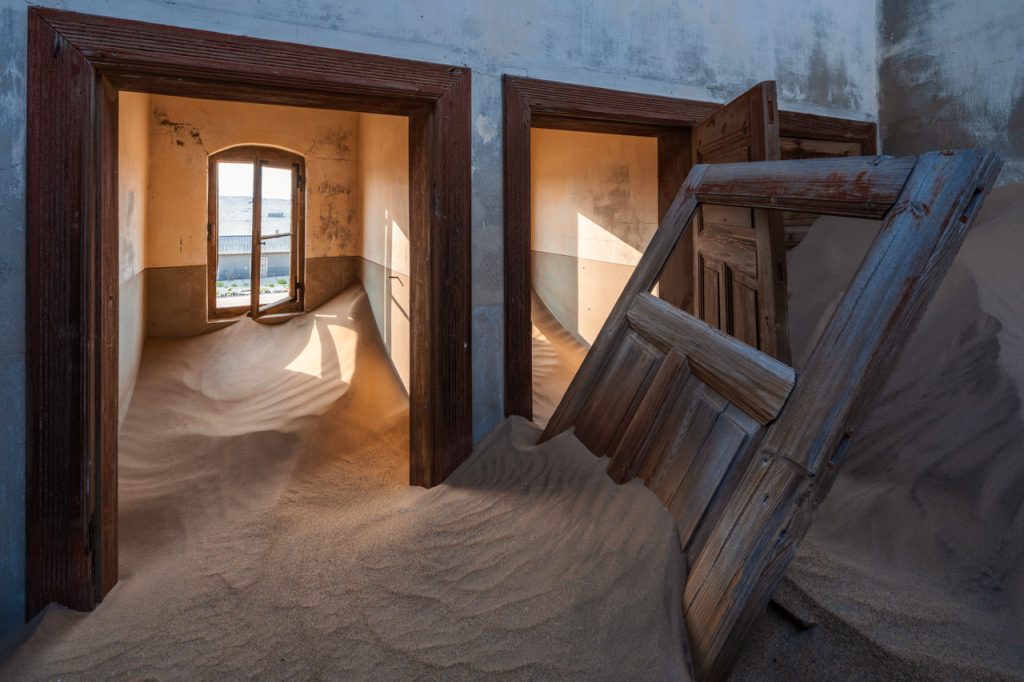

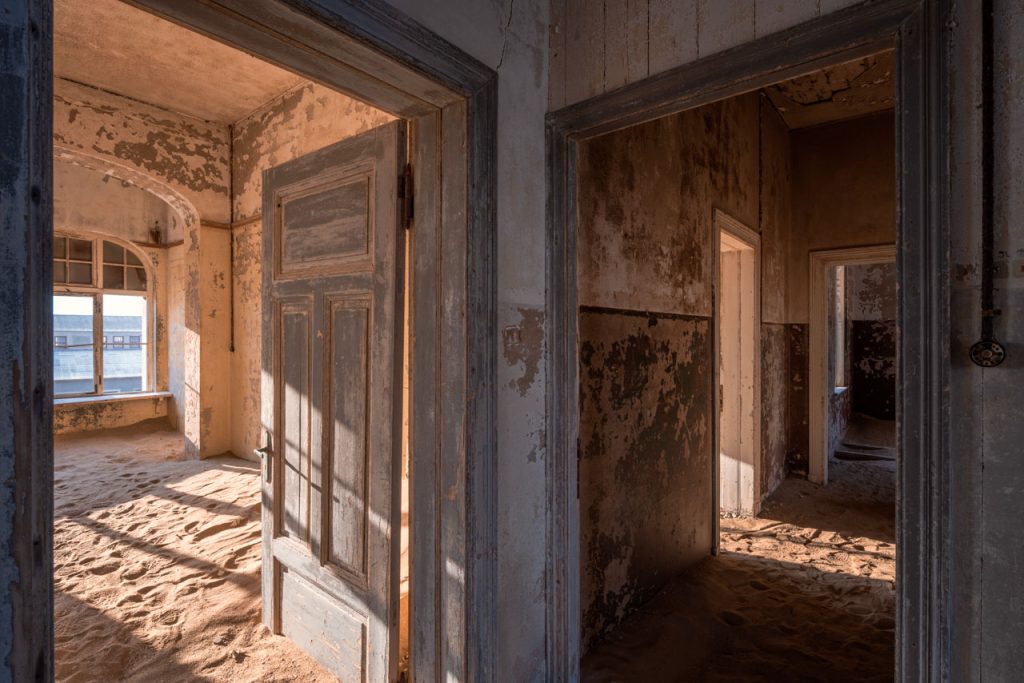
Sossusvlei is a huge area to cover with an amazing perfect photo subject wherever you turn.
We started making a joke afterwards to head back to "Sossus" and spend the rest of our Trip there since it was truly amazing, but we wanted to stick to our route as best as we could to experience the full beauty of Namibia.
After we spend four days at the Namib Naukluft National Park we drove 550 km to Spitzkoppe where we decided to stay for 2 nights. With making a lot of distance throughout our journey we got to see a lot of different aspects of the Country. Camping right next to the mountain or out in the wide plaints is really special. From Desert to Mountains and coast lines you have almost everything and a lot of changes of landscape throughout your journey! We tried to cover as much area as we can but you need to spend at least 2-3 months to understand how massive this Country is.
We continued our adventure at Walvis Bay. Once we arrived, we took a day excursion to Sandwish Harbor, where the Atlantic Ocean meets the desert. On the next drive to Etosha via Windhoek, we had some tire issues and had to change our itinerary, and we decided to travel to the Namibs Valley of 1000 Hills.
Dany Eid 
Looking back I think the open door helicopter shots was one of the most challenging photoshoots for me. Ayed was sitting on one side and I was on the other side so I often could not capture what he's seeing and the other way around. It was extremly windy and on top also we had low light contidions in many images.
To photograph the sunset was very difficult since you have to expose properly and get sharp images while your moving. You have to be careful for your shutter speed and then you have to compensate by increasing your ISO but you don't want to increase to much. I was confident though to achieve the rusults I was looking for since I was shooting with the Fuji GFX medium format.
While shooting on the ground you often you can not take your car and drive offroad so you have to do this additional effort to walk and to be able to get closer to your composition in time. Sometimes you leave the car and even walk for two or three miles and you have to be able to reach your composition before the light will change again. If the golden hour is at 5:00 PM and you want to get the shot - that's your only chance!
This was one of the pictures where I wanted to get those different layers and different colors of the dunes at sunset and you have different shape of and layers and the tree is isolated somewhere under the dune.
Adventure Wrap Up
Preparation and planning is everything - Especially for landscape photography you want to know about the light conditons on your location you have to think of many things other than taking photos. The Country is huge and you need to know and adapt to the speedlimits (Often are not able to go faster than 80 km/h )
As with many adventures, the kindness of the people we met was amazing! When we had a tirebrake and there is no car to be seen. One lonley car went by and send us help from the village close by.
Also Benjamin Brynard, who we met in Walvies Bay, recommended us accomodations and gave us tips. The camp proved to be very good stop and we were met with the great hospitality of the camp manager Elise. Another f-stop Ambassador, Jandre Germishuizen, managed to surprise us with an upgrade for our stay at the camp. After our unforgettable stay at the Nambis Valley of 1000 Hills, we continued to Etosha National Park. We camped for 3 nights at the park, and here we finally had our first direct and close encounters with wildlife.
The challenges with international travel made our return more difficult that we expected. We made multiple trips to the airport but could not board. After changing flights multiple times, we finally managed to return home only a few days late. The adventure, car trouble and travel challenges, did not detract from the quality of what we accomplished.
The images we brought back are outstanding. We experienced the beauty of a vast and interesting country, and it was a very personal experience. The team was great and each one of us contributed to this adventure in many ways.
I’m looking forward to my next trip to Namibia, which I’m planning now and also looking forward to some exciting additions to my next trip!
The Gear I used:
Bodies: Fuji GFX 100 & Fuji GFX 100S
Lenses: GF 23mm & GF 32-64mm & GF 45-100mm
Sukha 70L Adventure and Outdoor Camera Backpack as well as various pouches
A big THANK YOU goes to:
My 2 companions during the trip: Ayed Tadros & Lena Oberhofer
· TechPro Safari for the very well equipped Car
· Namibs Valley of 1000 Hills
· Sossusvlei Lodge for organizing our helicopter trip
· Mola Mola for organizing our excursion at Sandwish Harbor,
and last but not least the 2 brands I represent:
f-stop & Fujifilm
Photocredits: Dany Eid
Behind the scenes photos & video: Lena Oberhofer
We are Yvonne Lesewa and Simon Beizaee, adventure photographers with many years of experience in the outdoor branche. We both studied Geography and are super happy that we can combine our love for nature, our favorite sports with being outside and produce stills and videos for magazines, brands and commercials.

to Columbia, Mexico to all places around Europe. We plan, organize & produce all of our campaigns and this kind of creative work gives us the power for new ideas and trips. We have been living in our city of choice Innsbruck, in the middle of the Alps, for 6 years. Here we can perfectly combine our passion for photography and being outdoors. Whether it's mountain biking, ski touring or just a round of hiking with our husky Akiro.
We founded a creative Collective to work on bigger productions with friends we can relate on to make our clients happy and to stand out. As we love adventures, different cultures, people & food we work all across the globe, from MTB Race Events in South Africa,
Simone Beizaee 
In August we had the opportunity to visit Iceland for our Client Hymer, to produce an outdoor adventure campaign. Already the 3-day journey by ferry, passing the Farör Islands, was absolutely impressive. After arriving on Iceland we didn’t had time to loose, so we headed directly into the Highlands. The next 4 weeks we travelled nearly 6.000 km through the Island to capture the car and the unique, breathtaking landscape. It felt like a trip on another planet. We went hiking in Landmanalaugar, watched Northern Lights, saw whales at the North Coast, went swimming in hot springs, marveled at the largest glacier in Europe and touched fresh lava at the active volcano Fagradalsfjall.

Simone Beizaee 
No doubt, this trip was different. The Icelandic Highlands are a deserted area without any infrastructure, hot
waterfalls and springs, massive glaciers, arctic foxes & volcanoes – is a dream for every photographer.
The Highlands are only accessible with a 4x4 vehicle, so it was a dream come true for us to be able to travel them
with the 4x4 van, which was also a comfortable “home” with a kitchen and bedroom inside. The journey with our own van also has the advantage that we could take all our equipment easily. This was in addition to clothes for all 4 seasons (which we have also used!), Cooking utensils, 2 gravel bikes from Merida, hiking gear and our complete photo and video equipment.

Simone Beizaee 
As we founded our creative Collective theoutsidefactory we love to work together with creative minds – so we
invited filmmaker Florentin Haunold, a friend from Innsbruck, to travel with us to produce the image clip. Hundreds of kilometers on unpaved roads, potholes, weather changes from one second to the next, far away from any civilization, little experience in off-roading, long distances without cell phone signal and the drive to get the best shots out of everything - Iceland set us under pressure.
Fortunately, we met an experienced off-road driver right on the ferry to Iceland, who was traveling to Iceland for the sixth time. On the 3-day ferry ride we quickly became friends and so we decided to start together in the highlands. So we got a feeling, of crossing rivers, climbing steep and rough jeep roads and how to plan distances and miles in the backcountry. We had an extra tank of fuel with us just in case, always enough food supplies for several days and checked the weather forecast several times a day to be as flexible as possible. We realized that it is a good idea to be well prepared in the highlands, not to drive off too recklessly, and to learn from more experienced people.

Simone Beizaee 
Hard to say as every day was filled with little adventures and breathtaking moments. The possibility to reach an
active volcano and on the same day drive next to Europe’s biggest glacier is crazy! But also standing under a hot
waterfall in absolute solitude of the Highlands and knowing civilization is several hours drive away was definitely a unique adventure. We found a road which was not mentioned on any map, but which was an official road, that meandered relatively close to the glacier. We followed the road, which became steeper and steeper and suddenly we were directly above the glacier. We were able to park our car right next to the glacier. The sunset on the glacier with the sea in the background was an unbelievable experience. It’s like traveling back in time and the the European alps decades ago.
Eating out in Iceland is very expensive, so we cooked for ourselves most of the time. The fish & chips tasted all the better after a long, cold day in a cozy bar at the harbor. Once we tried ice cream made from local sheep's milk and blueberries, which took some getting used to for us. Cafe is national drink in Iceland, no wonder with the often uncomfortable temperatures outside. In addition, there are extremely sweet pastries, relatively cheap which made it always a good idea to make a coffee stopover somewhere.
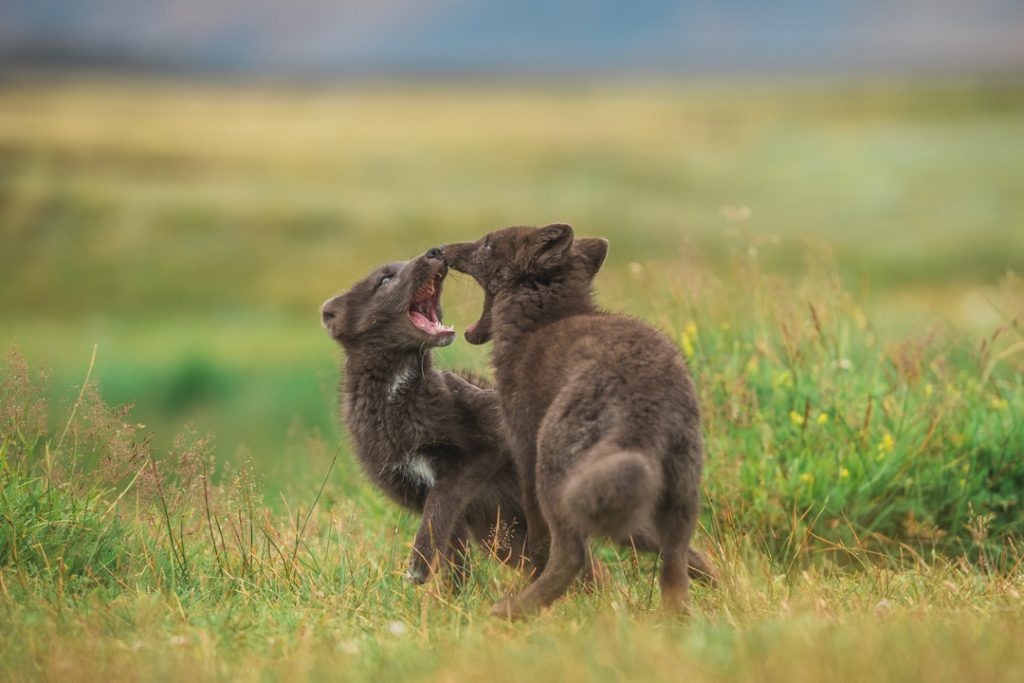
Simone Beizaee 
The highland roads are often only open in July and August due to the weather and are closed for normal cars
without four-wheel drive. Renting a car locally is relatively expensive, especially if you are traveling for a longe time, it can be worthwhile to take your own car and travel by ferry. Since the ferry runs only once a week, this is quickly booked up in the high season. In the highlands, an extra gas can and offline maps should definitely be in your luggage. The weather can change within minutes, when hiking always have a rain jacket with you and check the weather forecast in advance. Download the Aurora app to increase your chance of seeing northern lights.
In the last years we traveled through Norway, Albania, Switzerland, Dolomites or Greece. And on our bucket list for next year are definitely mountain biking in Scotland and Iceland in winter someday again.
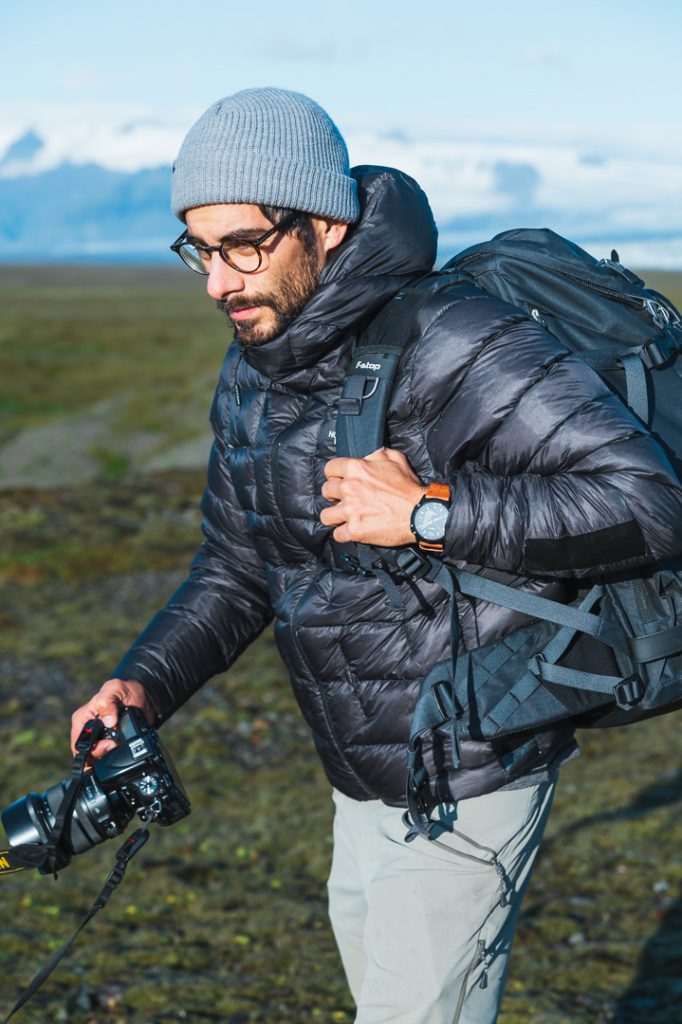

Stephen Jones is a photographer, storyteller, and traveler with a deep love for adventure and anything water related. As a kid growing up in Southern California, just north of Los Angeles, Stephen spent most of his days surfing in Ventura or mountain biking in the mountains around his home. After graduating from UC Santa Cruz in 2021, Stephen has worked with a number of brands in the outdoor and fashion industry, including Jansport, GoWesty, and Indah Clothing. Photography has become his career, his escape, and his creative outlet to be able to try and tell the stories that otherwise wouldn’t be told. Much like surfing and photography, storytelling has become a passion of his and he wants to use it to show people how amazing this world and its people really are.

Stephen Jones 
Directly after graduating from university at the end of June 2021, five of my closest friends and myself set off for Southern Mexico in search of surf. We had spent the last 3 years of school living together, crammed into a three bedroom, one bathroom home in Santa Cruz, California and we were more than ready for some adventure. After meeting one another randomly in our freshman year and dreaming of where we’d go after graduation, this final surf trip together only grew in hype and importance as it came closer to becoming reality.
Altogether we had had quite the collection of personalities. First up is Miles Miller, the physics major who in his spare time is solely focused on surfing some of the biggest waves in the world. Next is Takumi Nishikawa, a talented chef and surfer from La Jolla, CA. Then we have Jesse Cole, the soon-to-be doctor of veterinary medicine headed to Colorado for a DVM/PhD program directly following this trip. Dylan Elliot, the true “frother” of the group who is one of the most stylish surfers I have ever seen, and is bound for a career in surf forecasting. Then there’s Charles Hendrickson, the marine biologist who also does some of the best power surfing and carves of anyone I know. And finally, there’s me, the photographer and surfer that has been more or less obsessed with travel for most of my life.to input text into the page.
When we arrived at Zihuatanejo Airport, in the state of Guerrero, we decided to stay in a nearby town for two days before driving to a wave about 3 hours north. Together we had 18 surfboards in total packed in and on top of our rental minivan, and I was happily able to fit just about everything I needed for two weeks in Mexico within the f-stop Anja 40L pack with a small ICU. As far as camera gear went, I wanted to keep my setup as light as possible because I was here to surf and document “the search,” instead of the scoring. Afterall, I wanted to be the one scoring, not the one sitting on the beach with a camera. In my small ICU I fit my Sony A7RIII with a 35mm Zeiss lens, a minolta 35mm film camera with a 50mm lens, and all the batteries, SD cards, chargers and accessories needed were packed within a medium f-stop pouch. I knew the Anja could take a beating, so I had no worries that my gear could handle being tossed around and shoved into a minivan.

Stephen Jones 
Like any good adventure, however, things didn’t exactly go as planned. We had heard the wave we were hunting was a perfect left-handed point break that peeled for over 100 yards, and also had its fair share of barrels. So needless to say our expectations were high. Once we finally made the journey north to this wave, we found that mother nature had other plans for us. The morning after we had arrived, the first big hurricane of the monsoon season made landfall… directly on top of us.
The river adjacent to the break that is responsible for it’s perfection as a left point break was also responsible for its temporary demise. The hurricane that passed through dumped so much rain into the mountains behind us that the river broke open to the ocean about 3-4 times wider than it usually runs. There was so much debris and mud in the water that the wave became virtually unrideable overnight. We waited there for about 5 days in hopes that it would clean up enough to become surfable again. We filled our new found free time playing plenty of billiards at the only bar in the tiny village we were in and were taught a hard lesson in patience by the constant downpour.

Stephen Jones 
Eventually we decided that our famed wave was not going to start working again for at least another week and it was time to hunt for another wave. After fighting the strong current, purposely forgetting the very real threat of crocs in the lineup that got washed down the river, and finally managing to catch at least one wave each, we set off. We had heard of a wave 4 hours North that broke over a cobblestone floor and thus was far less sand dependent. The break sat in a very small town deep in the cartel-run state of Michoacan, and we had gotten our fair share of “be careful” remarks from locals before making the journey. So after going back south to drop Jesse off at the airport and spending a couple days at a fun longboarding wave halfway to the airport, it was time to head back north in search of something better.
The drive itself was a beautiful road that hugged the steep, tropical coastline similar to that of Highway 1 along the Big Sur coast in California. We had lost all cell service since leaving to find this wave and were shrouded in coastal forest for nearly the entire journey, save for the few tiny villages and openings in the bush to see the view. Along that drive we saw more potentially perfect waves along a stretch of unsurfed coastline than I’ve seen in my life. The amount of beautifully breaking waves we saw that simply had no easy access to them was mind boggling. Something to return for perhaps.

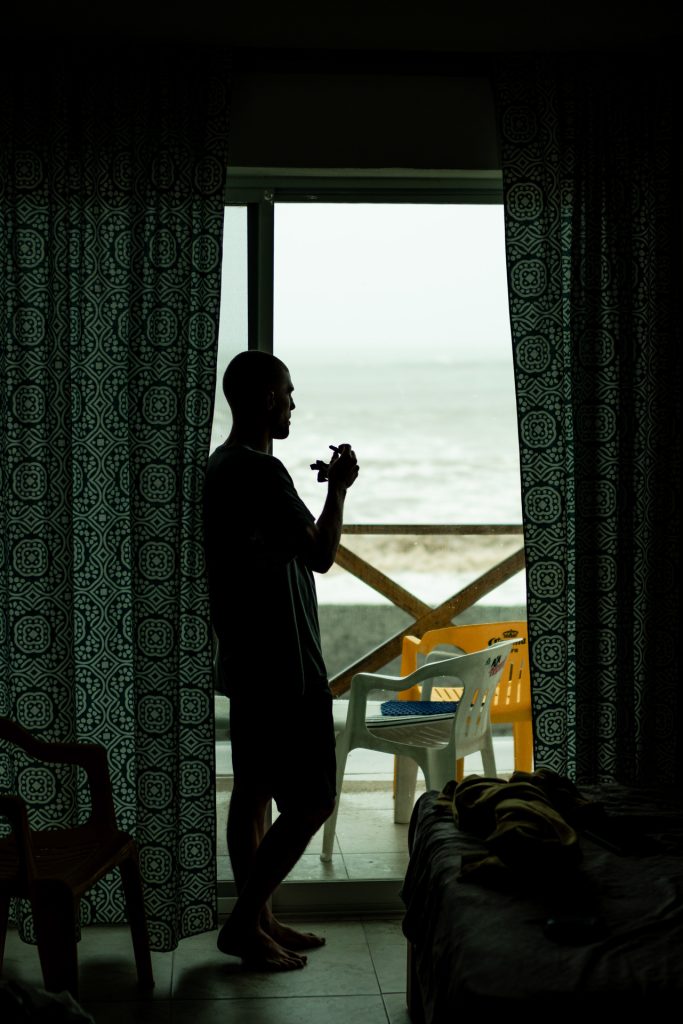
Stephen Jones 
After our 4 hour journey through a heavily cartel laden country, we were relieved when as soon as we arrived the welcoming was warm both from locals and other surfers on the same hunt as us. And it all paid off over the next 3 days when we finally found what we’d spent the past two weeks searching for; a peeling, warm water, left hand point break. We spent every hour we could in the water and only came in to eat or sleep, I hardly even took out my camera that entire time. In fact, I don’t even have a photo of the wave! While a part of me is sad I never captured it, a larger part of me is satisfied with that. This trip taught me that the success of an adventure is not quantified by the photos you have to show for it, and sometimes it's a good thing to leave the camera in the bag.
If I had anything to give as a tip to someone planning a similar adventure, it would be to stop planning. I don’t mean do nothing at all, but avoid diving too deep into your plan because the rigidity of your schedule will act as bars around your experience. A good adventure is always a result of the unexpected, so allow room for that to come. For us, almost nothing went to plan, and that is what made it such a great trip.
As far as what’s next for me, it’s time to chase a dream I’ve had for most of my life. Over the next few months I’ll be traveling around the western United States and Canada in my ‘84 VW Vanagon capturing the landscapes and people along the way the best I can. I have a passion for travel photography and storytelling, and while I’m only at the beginning of my career, I’m extremely excited for what will come from this next journey and the companies I’ll have the chance to work with along the way. .
You can check Stephen's work on his Instagram or his Website.

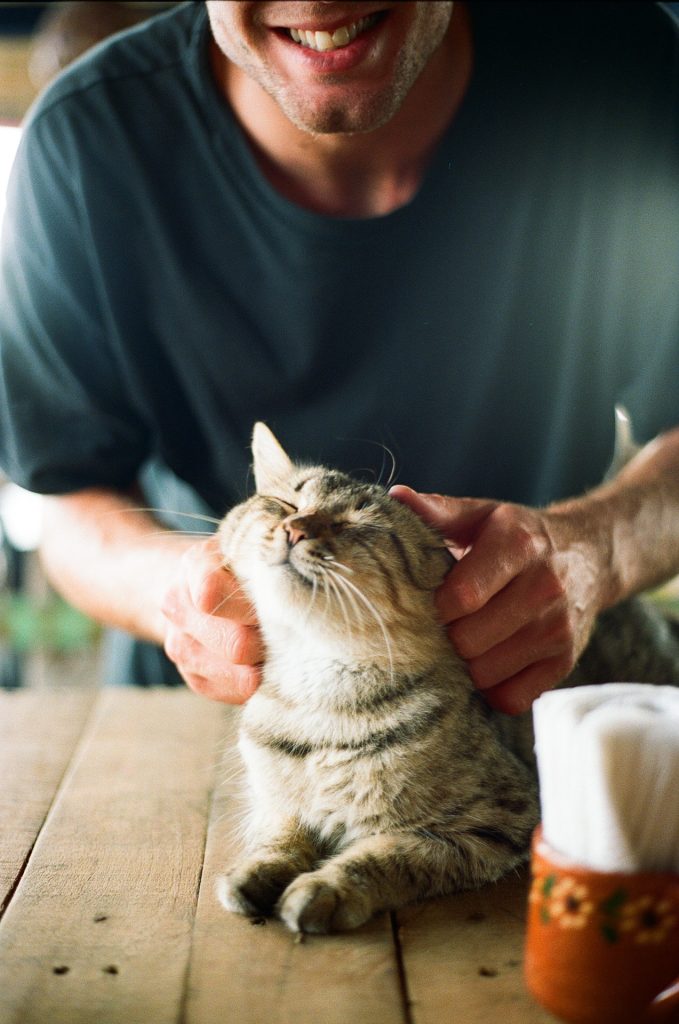


Discount Applied Successfully!
Your savings have been added to the cart.